In September 2022, Choisi Bookstore moved to Paradiso and became Artphilein Bookstore.
Da settembre 2022 la libreria Choisi si è trasferita a Paradiso (CH) ed è diventata Artphilein Bookstore.
More info: www.artphilein.org
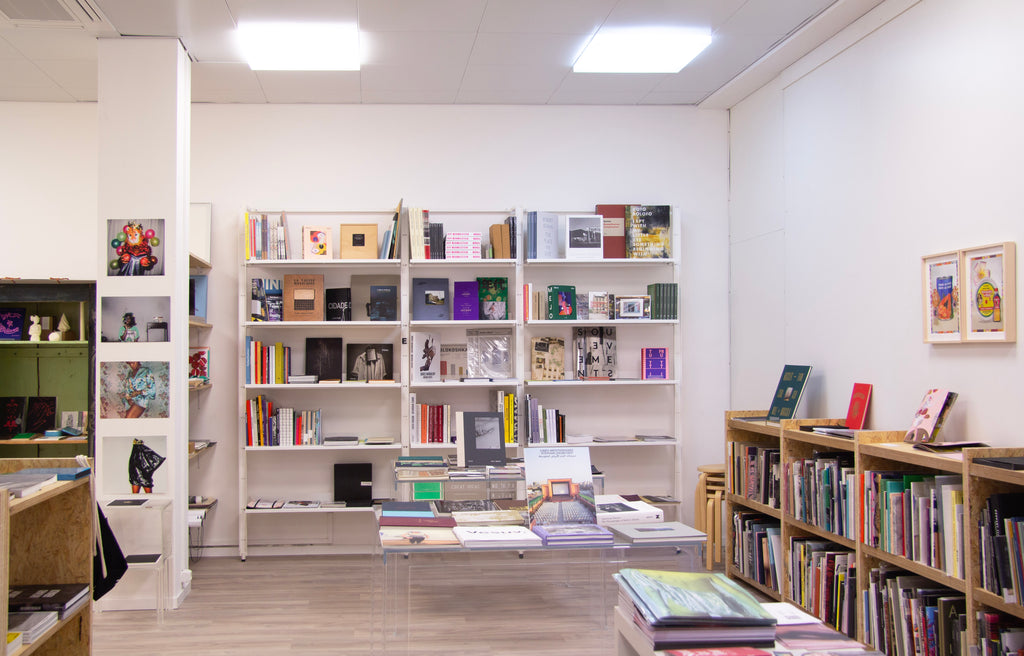
Da settembre 2022 la libreria Choisi si è trasferita a Paradiso (CH) ed è diventata Artphilein Bookstore.
More info: www.artphilein.org
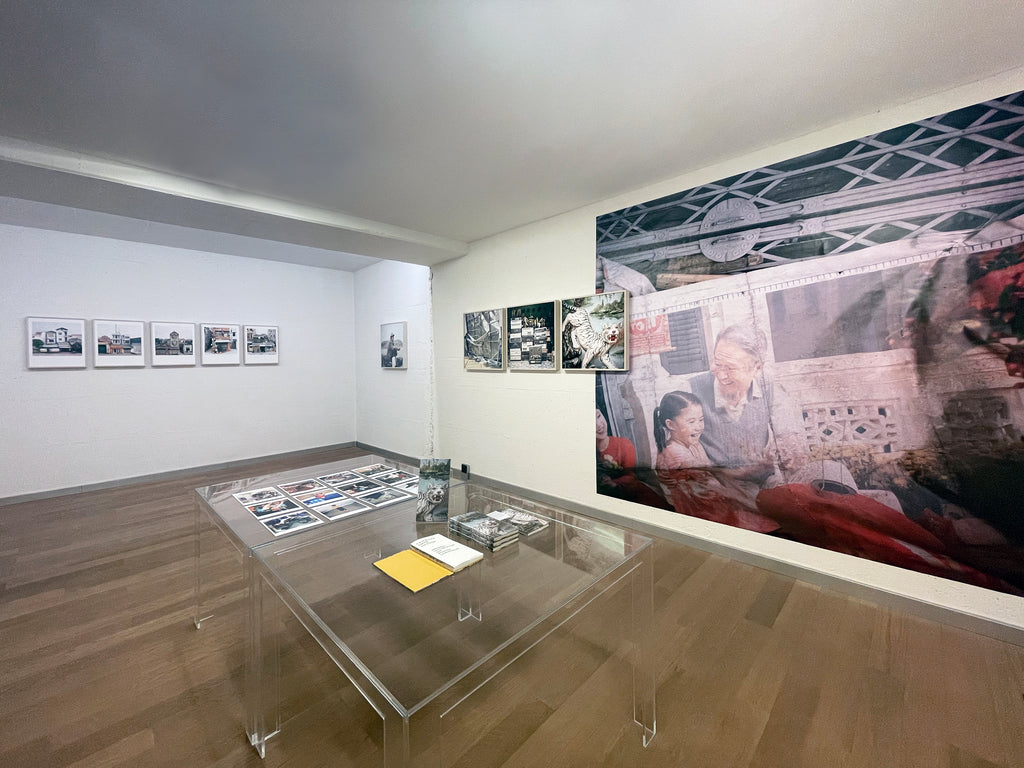
Exhibition Period: 29.01.2022 - 26.03.2022
The project is the result of eight years of research and photographs taken in Vietnam by Gianpaolo Arena in 2013, 2015 and 2018, and that discover the complex connection between landscape and civilization, capturing the customs of contemporary society.
The photographer investigates the present and the future of the city, the combination and dialogue of different periods and cultures.
Between vestiges of communism and desire for consumerism, Vietnam over the last twenty years has been going through one of the most vigorous urban transitions in Southeast Asia, linked to an extraordinary and constant economic growth that forecasts suggest is only going to strengthen in the coming decades. If on the one hand the economic progress of Asian capitalism has brought numerous benefits for the entire country, on the other all the frailties that such sudden and aggressive urban development has generated are increasingly evident. Yet it is precisely in the contradictory gaps between these two aspects that the identity and urban character of Vietnamese cities and the country as a whole are framed.
Simona Galateo from “Vietnam: Urban Development between Tradition and Globalization”
The book, curated by Chiara Capodici, was published in 2021 by Berliner publisher The Velvet Cell, funded by Eanna de Freine.
Gianpaolo Arena (1975, Italy) conducts research projects into environmental, documentary and social topics. In his work landscape and portraiture are employed as means to examine the representation of anthropized spaces and the sustainability of contemporary towns. Since 2010, he has edited the international photography magazine Landscape Stories and organized workshops and publishing and exhibition projects. He is co-founder of CALAMITA/À (2013-ongoing). In 2016 he was appointed one of the curators of the Venice Pavilion for the Architecture Biennale. In 2020 he curated the MH ART PROJECT. Arena’s work has been exhibited at several institutions and photo festivals in Italy (Triennale di Milano; MACRO [Museo d’Arte Contemporanea di Roma]; SI Fest) and abroad (10th São Paulo Architecture Biennial, Brazil, with Latitude Platform; Alt+1000, Rossinière, Switzerland).



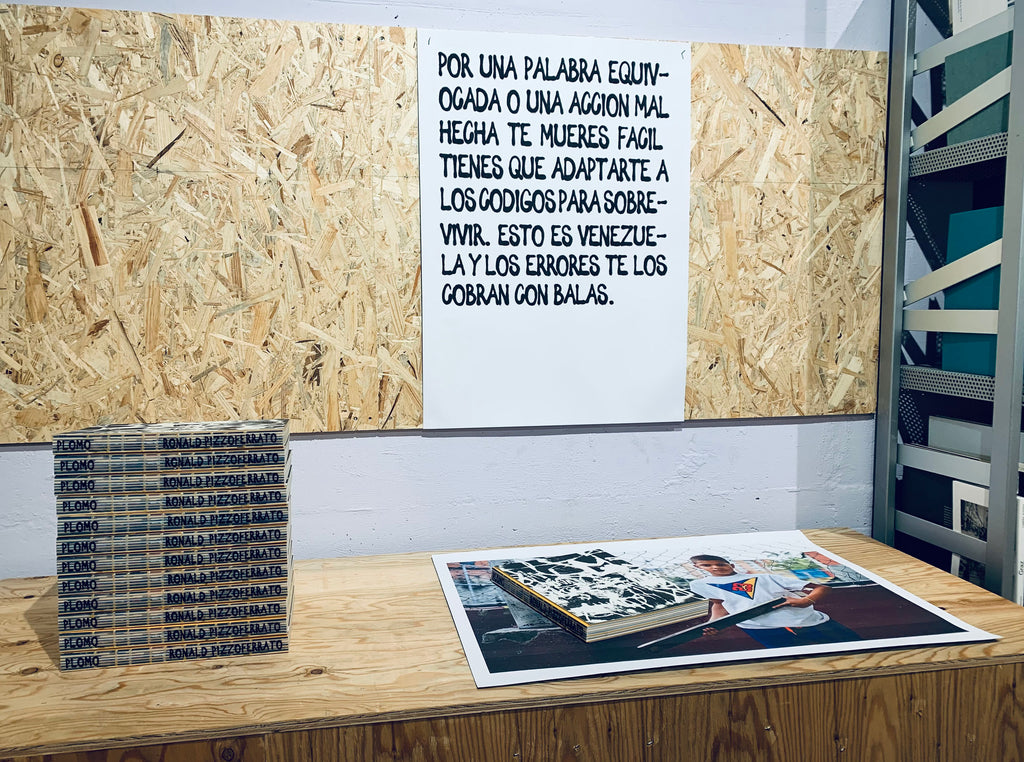
SPAZIO #2: 25.11.2021 - 26.02.2022
PLOMO presents an exploration of the phenomenon of excessive violence in Caracas; it focuses on the value of the creative actions of people whose lives are determined by violence. Many academic works that aim to understand and “dialogue” with the phenomenon of violence in our country only result in an explanation of our social problems as a lack of personal capacity to adapt to external models, almost always European ones. These figures of authority usually declare that we live in violence either because we are too wild to adjust to the capitalist system—and its supposed notion of honest work—or because we are too immoral to maintain the high values that Socialism demands. Our social reality, although affected by external forces, corresponds to its own internal logic. Any research work that sets out to understand this particularity has to begin by not allowing our reality to continue to be told through other people’s stories. Stories that almost always denigrate us, put us down in relation to some imposed scale of values, and do little to help us better understand our world.
PLOMO is part of a large network of actions undertaken by the author and his collaborators, which range from graffiti, art, research, and cultural criticism, all with the mission of the decolonization of the Caribbean cultural front.
PLOMO is an anthropological work under a semiotic lens, which is to say, an exploration of the ways of being human, taking into account the invisible power structures that connect all things, and how those forces become evident in our expressions and culture.
(Excerpts from Alexander Chaparro's essay)
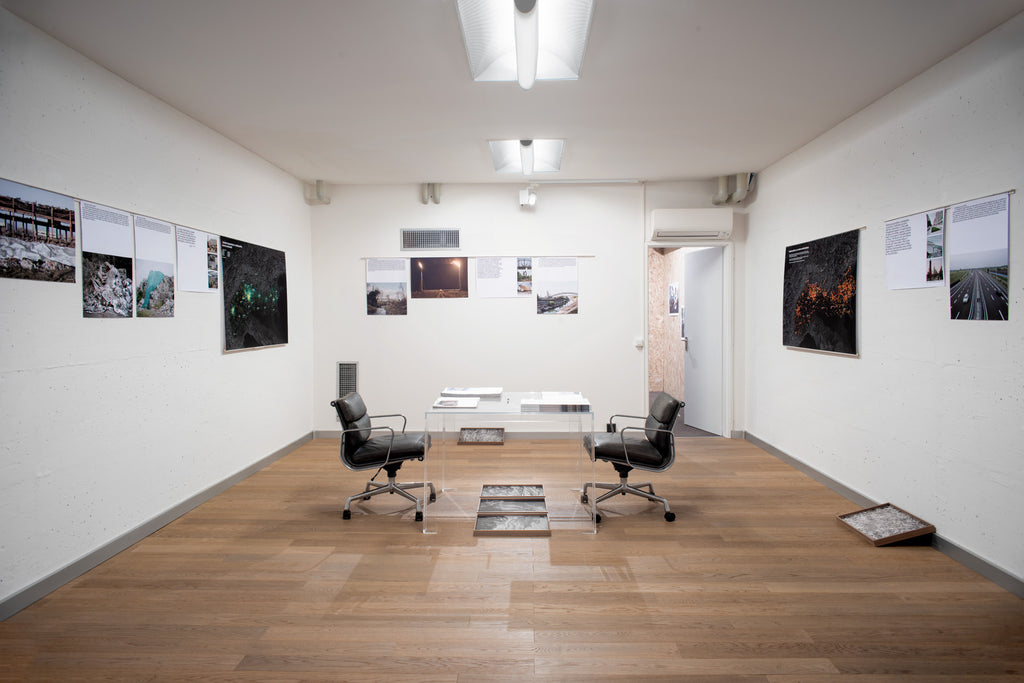
Exhibition period: 25.11.2021 - 22.01.2022
Spazio Choisi will display Luca Quagliato and Luca Rinaldi’s long journey, narrated in the photojournalistic book La Terra di Sotto.
Photography and investigative journalism come together to investigate the environmental criticalities of northern Italy. The exhibition gathers together twenty-eight tableaux in which photographs, texts and cartography alternate, which characterise the path of what was the environmental legacy "of the century of development" of the Italian industry.
La Terra di Sotto runs along the A4 from Turin to Venice; the highway that, behind its apparent monotony, leads along some of the worst cases of pollution in northern Italy.
"The landscape of the productive north - explain the authors - is dotted with cases of land and water pollution, not to mention the quality of the air we breathe. Photographing this historical moment for us means to take note of the environmental conditions of the area in which we live and to spread this knowledge, to stimulate research, activism and the study of solutions regarding an issue that is too often forgotten on the political agenda".
The publication, edited by Penisola Edizioni and curated by Steve Bisson, is enriched by an essay by Matteo Aimini, researcher in architecture for Landscape and by a section of maps and data edited by the cartographer Massimo Cingotti.
Luca Quagliato: freelance photographer and videomaker. Since 2008 he has been involved in documentary photography. He is part of the research collective Habitat Project. Since 2014 he has been dealing with environmental issues together with the journalist Luca Rinaldi.
Luca Rinaldi: journalist, he is director of the online portal of investigative journalism IrpiMedia. He worked for Corriere della Sera and collaborated with other national and international media dealing with inquiries.



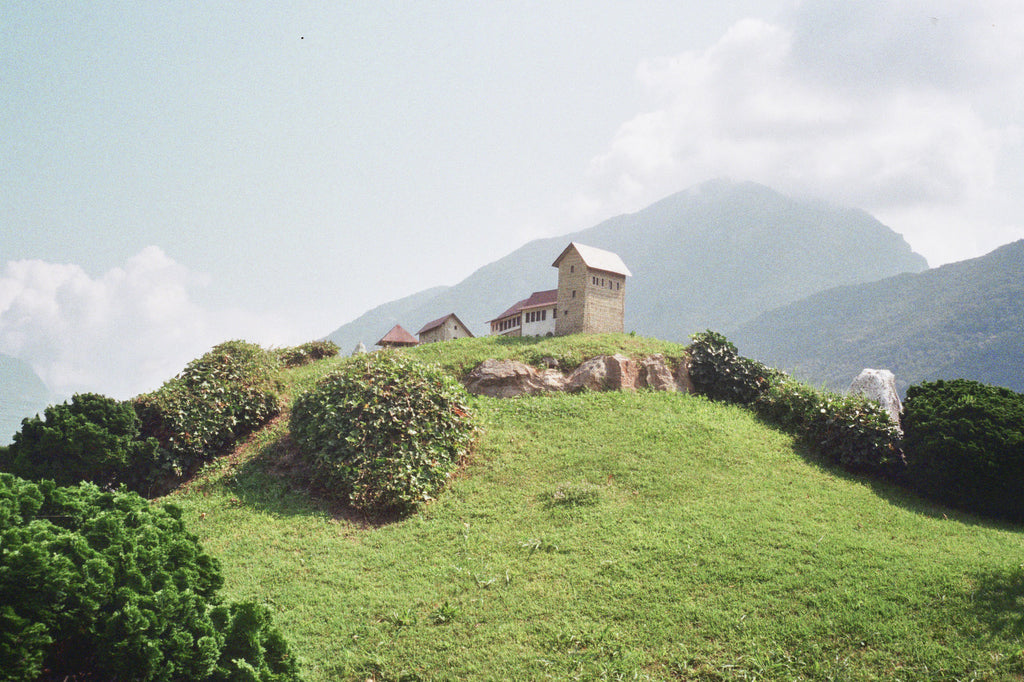
SPAZIO #2: 18.10 - 14.11.2021
From Saturday, September 18, on the occasion of Bi12 - FAKE Visual Distortion and the publication of the photographic book by Vittoria Fragapane, the Choisi 02 Space, dedicated to the editions of Artphilein Editions, hosts the display of Travels into One Nation of the World.
T. S. Eliot once wrote "The journey, not the destination matters".
The destination of the book Travels into one nation of the world cannot be revealed, you will discover it slowly, step by step, exactly like when you start a journey in an unknown country, or like when you always walk the same road, but each time from different perspectives.
The contribution that Vittoria Fragapane wants to offer is a personal story of months in which the world and its daily life, with the lockdown, began to withdraw from an "outside" towards an "inside". Public and private sphere, externality of social relations and domestic interiority seems to have leveled its own boundaries, its own margins, blurring the one in the other.
The subject of these photographs is the loss of familiarity in inhabiting one’s own world. The images show just the things in their being out there, alone and at a distance.
Vittoria Fragapane was born in Rome in 1993, she lives in Ticino (Switzerland).
After studying interior architecture she decided to focus on photography to investigate different spaces and reflect on the relationship between interior and exterior in a house, object or person. Of an intimate nature, she has a particular interest in the atmosphere that the place brings with it.
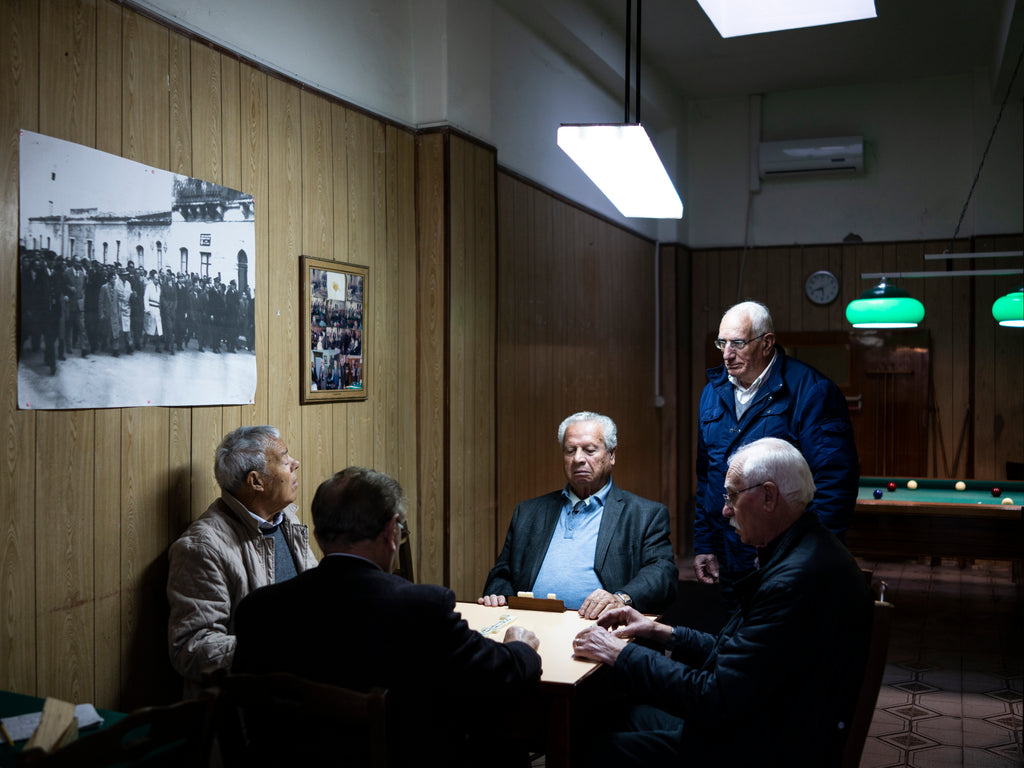
Exhibition period: 17.09 - 31.10.2021
From Friday, September 17, 2021 Spazio Choisi 01 hosts the installation by Sebastian Wells on his artist book La Rada di Augusta.
In the bay of Augusta, a vast coastal area of eastern Sicily, for over 70 years is operating the Syracuse Petrochemical Cluster, whose factories for refining, the processing of crude oil chemicals and energy production is one of the largest and most polluting petrochemical complexes in Europe.
In this photographic project, carried out between 2019 and 2020, Sebastian Wells accompanied the inhabitants of Augusta in their daily life marked by pollution, unemployment, poverty, corruption. The discrepancy between the richer and more developed north and the south is particularly evident in this part of Italy. In Augusta, in particular, there developed a complicated social tension between capitalism and Catholicism, infiltrations of the mafia and distrust of institutions, between environmental activism and resigned apathy.
Sebastian Wells uses photographic narration to investigate the anthropological core of the post-industrial society of Augsburg, in the belief that the relationship between environment and industry transcends mere political, technical and economic issues. Augusta could be anywhere.
Sebastian Wells is an obsessed young photographer, driven by the contemporaneity of current business and thoughts on how to view it. After starting as a sports photographer at the age of 15, he now works for publishing and commercial clients and for his personal projects almost everywhere. Sebastian, born in 1996, is a Berlin-based photographer who graduated from the Ostkreuzschule for photography in 2018 and has been a member of the OSTKREUZ Photographer’s Agency since 2019.
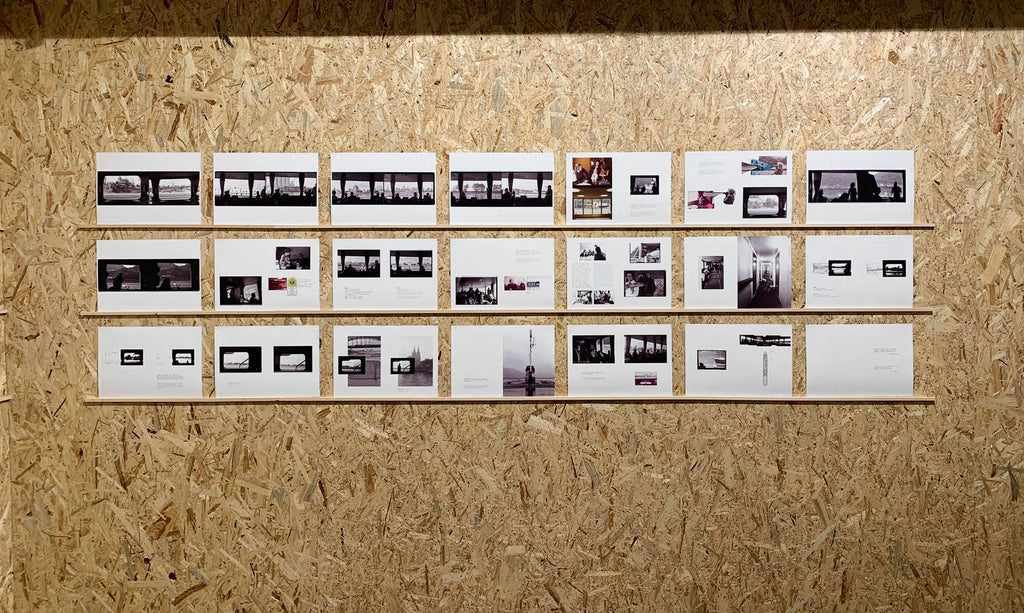
SPAZIO #2: 16 June - 10 September 2021
The new display presents Ugo La Pietra's artist's book, Viaggio sul Reno 1974.
This Rhine cruise was an artistic experience of Ugo La Pietra, conducted together with the Global Tools Communication Group, composed of Franco Vaccari, Gianni Pettena, and Guido Arra. With the trip/performance on the Rhine, the artists explored the theme of “communication” in a closed and segregated environment, such as that of a trip organized on a boat: from this limited context, marked by regular rhythms and by a reduction at the minimum terms of any influence from the outside world, the participants’ behavior, their interactions, the communication processes emerge.
The exhibition is enriched by a selection of rare artist's books in unique copies and the screening of the film “The reappropriation of the city" (Ed. Center Georges Pompidou, Paris 1977).
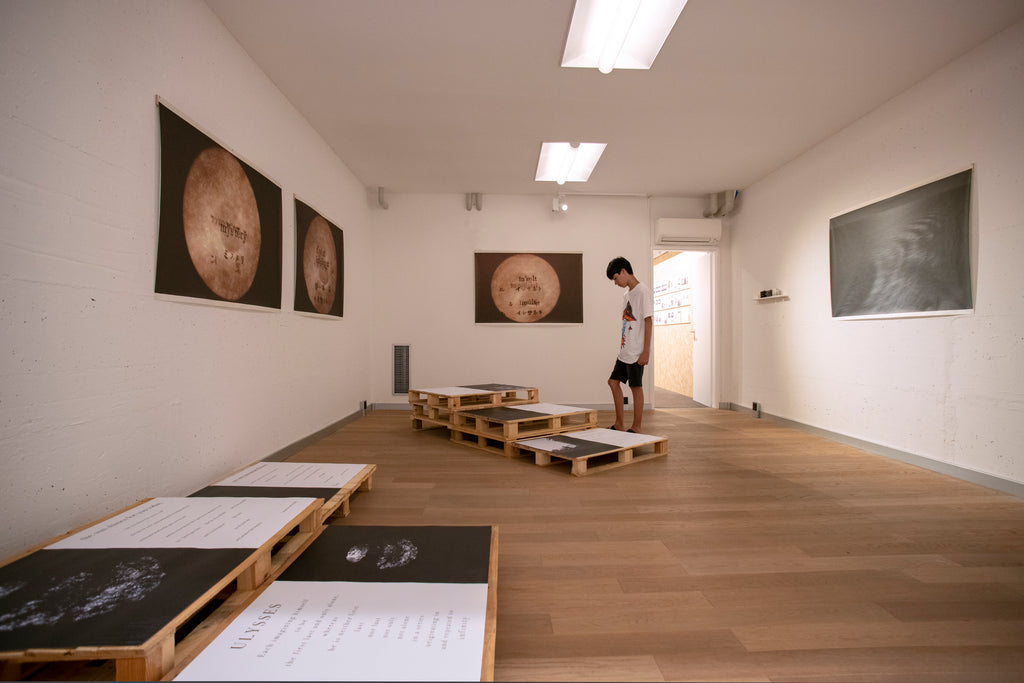
Exhibition period: 16.06 - 10.09.2021
To celebrate James Joyce, on the 99th anniversary of his novel 'Ulysses' (1922), photographer Leo Pellegatta and composer Nicolas Laferrerie present a multimedia installation and performance at Spazio Choisi 01 in which sounds, music and images evoke Joyce's imagination.
'Ulysses''s photographs follow in the footsteps of an imaginary and enigmatic journey, full of parallels with Joyce's work and Homer's 'Odyssey', and tell about some of the places still possessed by the presence of the Irish writer, in particular Trieste.
The music of Ulysses pays homage both to the musical sensitivity of the Joycean language and to the author's fascination with the aquatic element. A string quartet, a piano and James Joyce's voice seem to evoke an interior monologue, which melts into the electric clouds of the guitars, as if to outline the stream of consciousness of Joyce's and Homer's heroes.
On the occasion of the event at Spazio Choisi, the authors, in collaboration with Daniela Lorenzi (art printing house A14, Milan), present an artist's edition inspired by the charm of optical instruments at the early years of the history of cinema.



Exhibition period: 14.04 - 28.05.2021
Un foglio è un foglio, ma piegato enne volte diventa un libro d’artista is the new exhibition hosted by Spazio Choisi 01, curated by REPLICA, the archive of Italian artist’s books founded by Lisa Andreani and Simona Squadrito.
The exhibition tells – through editions, prototypes and maquettes of projects – the story and the publishing practices of Libri Tasso (L.T.): a small independent publishing house born between 2014 and 2015 in Bologna, from an idea of the artist Giuseppe De Mattia, whose books often arise from a single sheet that folded, cut or torn becomes a book format.
Since 2019, photographers Carlo Favero and Eleonora Ondolati joined the editorial project.
Winking at the idea of self-production and home-made, Giuseppe De Mattia chooses the street of his own home, dedicated to Torquato Tasso, as the name for the publishing house. The leitmotif that outlines L.T. publications is: the cheapness of their realisation, as well as the use and reuse of papers and poor materials. L.T. editions are made precious by their limited circulation and by the craftsmanship of the production. In some cases the edition is assembled by hand and takes the form of a maquette, with original drawings or photographs, which make it unique.
The exhibition includes the presentation of a prototype, 45 lampadari cazzo, which together with some audio works and materials, allows us to explore not only the finished object but also the process that leads to its realisation.


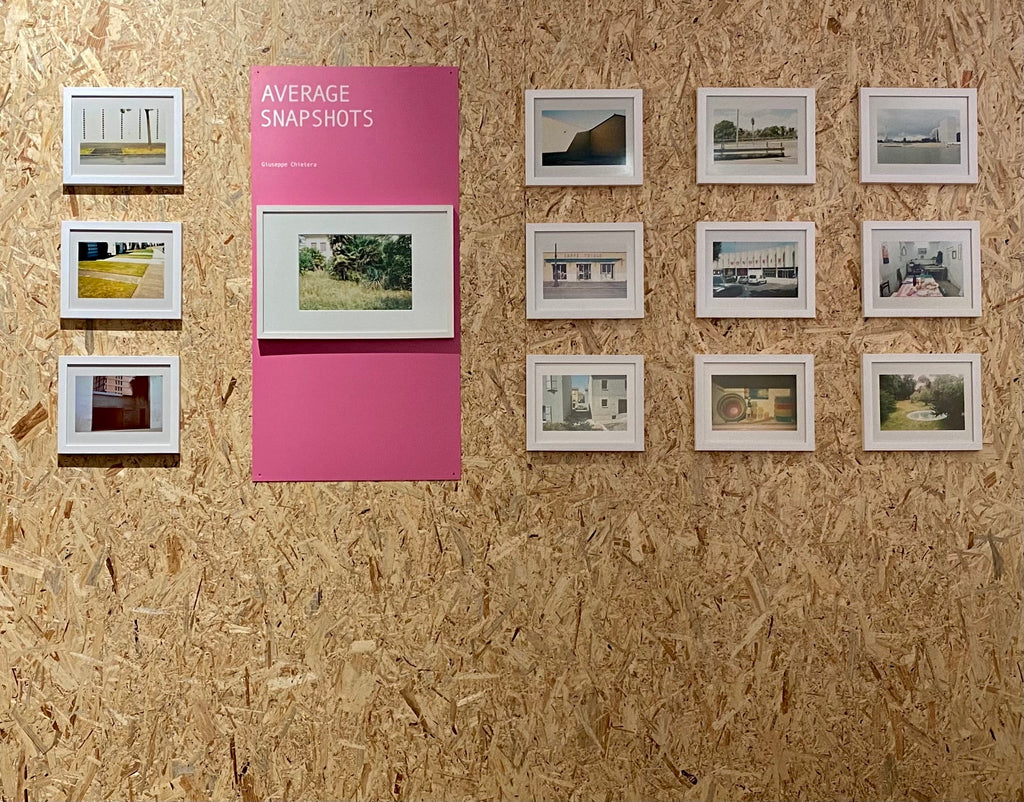
SPAZIO #2: 11 March - 30 April 2021
The Point and Shoot Series, is a 15-year long deep observation of those peculiar and common features that characterise the western “peripheral” landscape which is only apparently ordinary and standardised.
"Point and Shoot might literally sound like instruction for a handgun. Or rather, "look around you and shoot". At the heart of it there are thirty-six frames, -little more of a meter and a half of film-, and nothing else. The photographer has a single thought: to take photographs. It is poised between a "before", which has just come by, and a "after" which has yet to materialise, waiting for a shot that is already hanging in the air. Photography, in its purest form, is the reaction to this impulse. It is the bridge between what has been and what will be; a moment of grace on which is to the photographic act what a sock to a foot. With the advent of digital photography, the practice of point and shoot was to change into something very similar but opposite: the shoot and point. Looking around is no longer enough. You need the selfie, the control screen and the online feedback. Like or dislike? Keep or delete? Which memory will make it past binary code?"
Alberto Chollet
Journalist and television producer
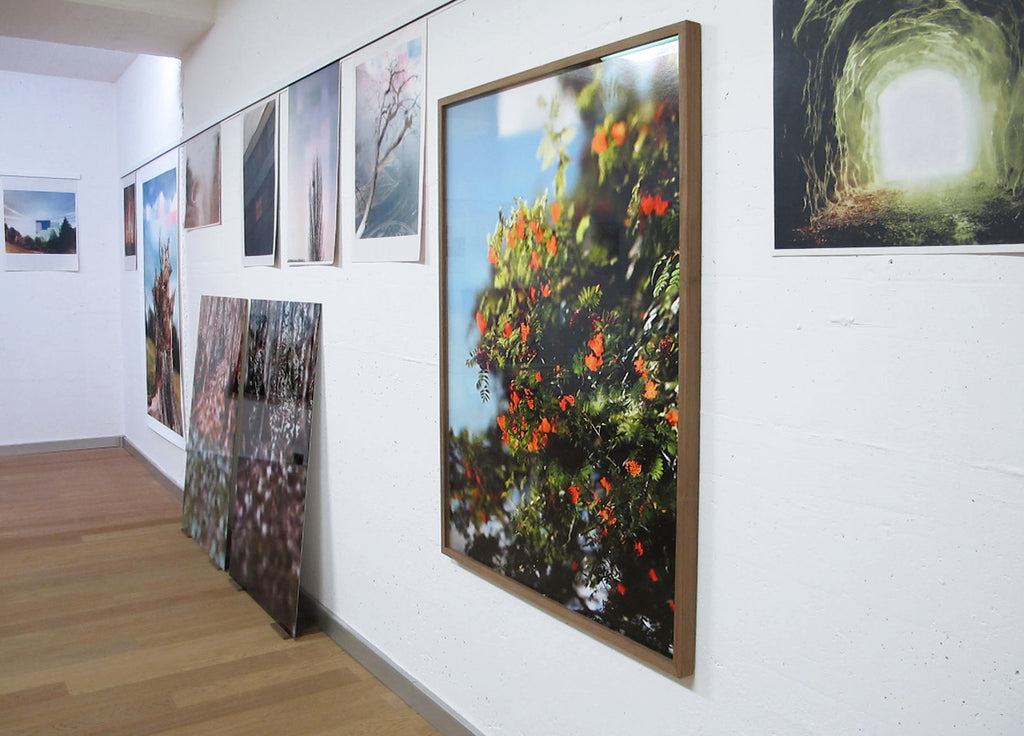
until April 9th
With "Ricochet", the artist and photographer Rudolf Steiner presents a series of pictures that document his fascination for the uncanny.
The pictures, taken over the last six years in the surroundings of his studio in Rondchâtel near Biel, translate –thanks to the use of a special digital shooting technique– the landscapes of rugged rocks, abandoned tunnels and huge industrial plants into "tableaux" of strange beauty.
The word "Ricochet" comes from French and means "rebound" or "bounce back" and is often used in connection with firearms or artillery. With this term, Rudolf Steiner refers to a theory of perception propagated by Plato and later Euclid, which states that a "ray of vision" emanates from the moving eye and scans the world in the field of vision - like a blind man with his blind cane scanning the street in front of him, or like a scanner registering the visible line by line in order to output it as an image.
Due to the long duration of the recording session, atmospheric influences such as wind, light changes due to clouds and fog are inscribed into the picture - the "visual ray" bounces off, the "ricochets" are recorded.



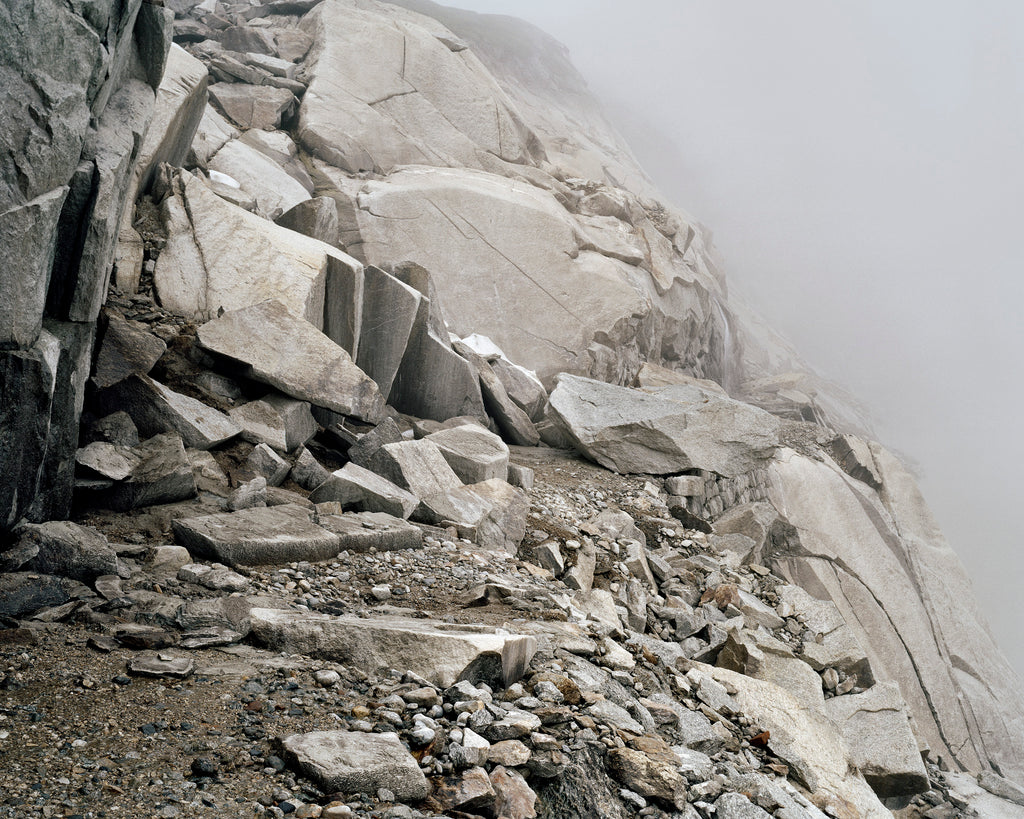
SPAZIO #2: 19 November 2020 - 15 January 2021
From November 19th, the new display at Spazio Choisi 02 is dedicated to the photo-book Gaia 2003 - 2018, by Tonatiuh Ambrosetti, published by Artphilein Editions.
The project investigates the conflict and the negotiation between humankind and nature. The artist's personal story - like in a diary - is juxtaposed with the images of the landscapes in which he grew up or in which he ventured in search of the power of nature.
"When I was still at school I titled my diploma work Nature does not exist and I soon clashed with the fact that human influence had already acted in every corner of the planet, even in those distant places where life is deemed particularly difficult, barely impossible."
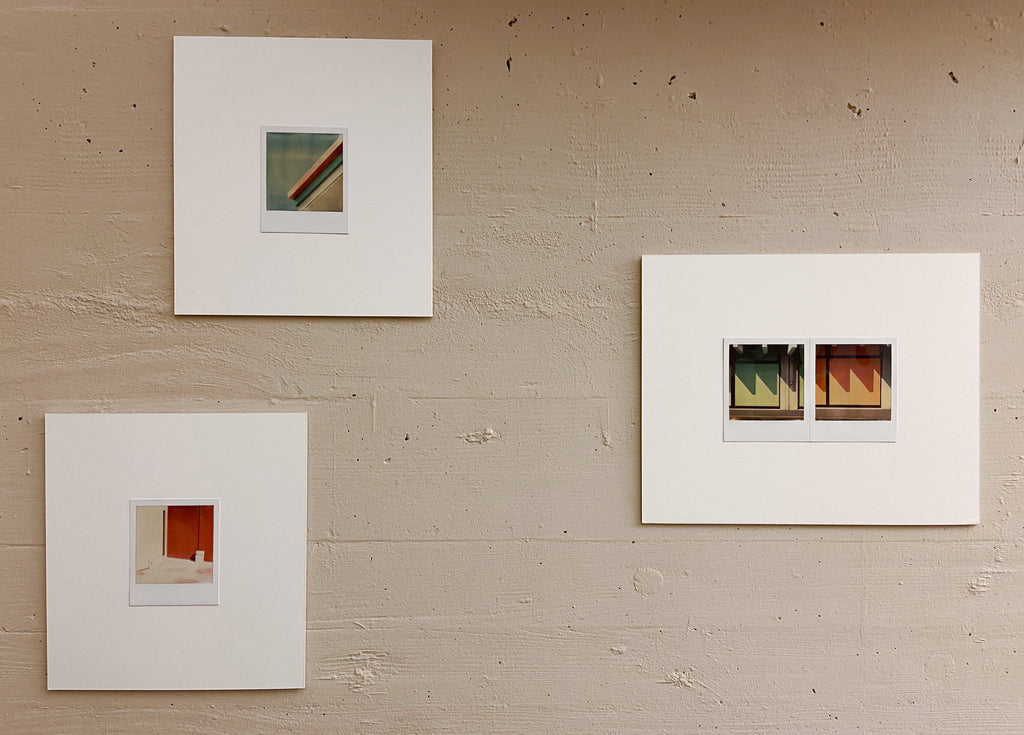
SPAZIO #2: 24 September - 15 November 2020
On Thursday September 24th, Spazio Choisi 02 inaugurates a new display dedicated to Andrea Tonellotto's photo book, Just a Perfect Day, co-edited by Artphilein Editions and Heillandi Gallery, Lugano.
Just A Perfect Day is a photo book and also the dream of a perfect day.
Andrea Tonellotto's Polaroids photos bring together geometries, lines, materiality, and colour.
There are several references to literature, music, Metaphysical and Surrealist painting: a manifesto for our times, created with the caricatural graphic expression of the previous century.
(From Giuseppe Violetta's preface)
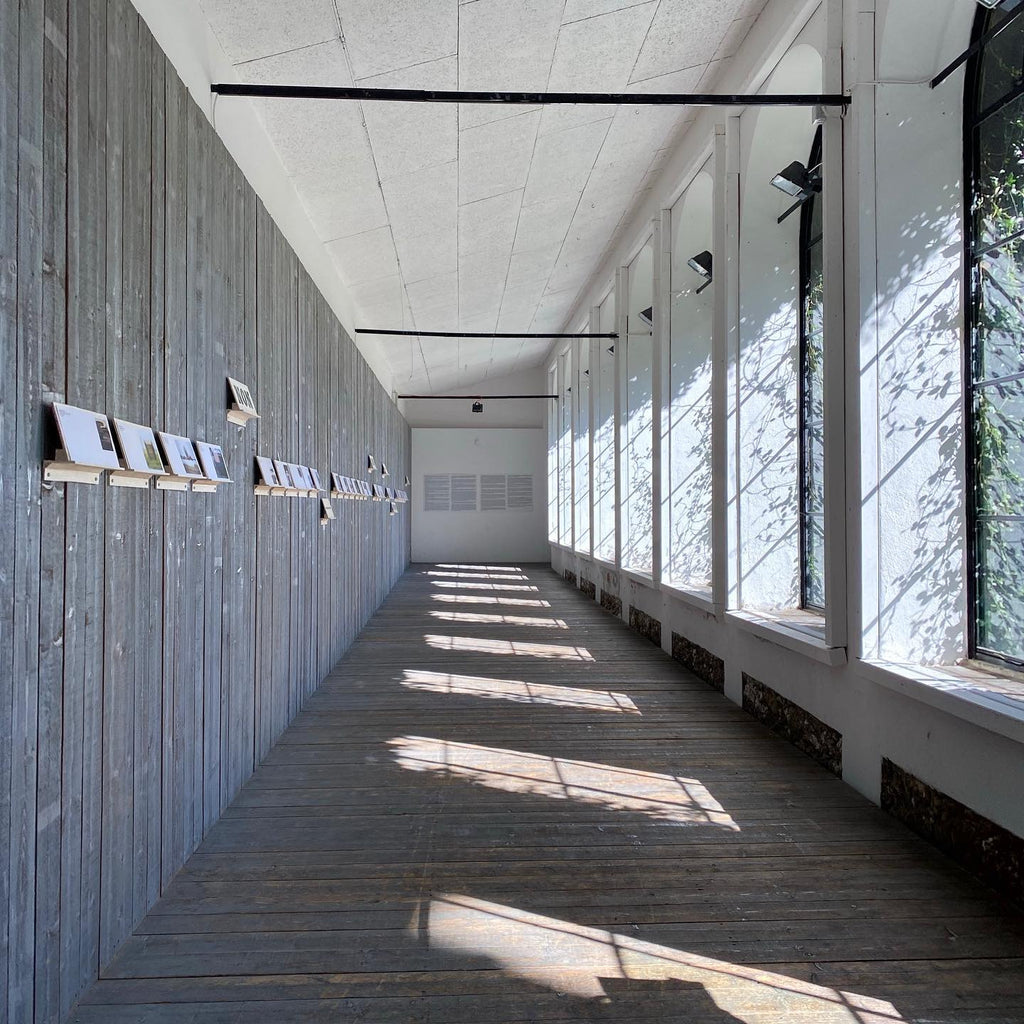
Exhibition period: September 1 - 26, 2020
Venue: i2a Istituto Internazionale di Architettura, Limonaia, Villa Saroli, Lugano
Curated by: Caterina De Pietri
Artists: Tonatiuh Ambrosetti, Alessandra Calò, Simone Casetta, Bruno Cattani, Gabriele Chiapparini/Camilla Marrese, Giuseppe Chietera, Marco D’Anna, Aline d’Auria, Matteo Di Giovanni, Délio Jasse, Milo Keller, Anastasia Khoroshilova, Ángel Marcos, Stefan Milosavljevic, Enrico Minasso, Maurizio Montagna, Davide Monteleone, Pino Musi, Igor Ponti, Luca Reffo, Caio Reisewitz, Carolina Sandretto, Laura Santamaria, Domenico Scarano, Fabio Tasca, Andrea Tonellotto, Salvatore Vitale, Jean-Marc Yersin
The start of 2020 gave no warning that only a few weeks later, our lives and our daily routine would change radically. Suddenly, a total stop: all still, confined at home, in isolation, limited by social distancing.
The idea to counter social isolation with a collective, choral, multi-handed book was Artphilein Editions’ riposte to impose a positive sense onto this juncture, one difficult for many and extremely tragic for others: Non-Gasoline Stations. So we sent the following message to a group of artists:
“The message repeatedly proclaimed in the media ‘after the end of the ongoing emergency, nothing will be like before’ is left open to decryption: intimidation, exhortation, annihilation or what? As an inevitable consequence of our forced immobility, in the meantime car traffic and, consequently, fuel consumption have dropped considerably. The future will tell us if and what will really change and if the car will continue to be a means of locomotion. Let's try to imagine that gasoline stations lose their function as fuel dispensers: they become obsolete, a historical find, an archaeological testimony of an outdated mode of transport.”
All the artists addressed with this message welcomed the invitation and sent their chosen image. Each image selected for this publication makes up a mosaic, the unifying link of which is given by the common atmosphere of suspended time, of transience, of fading.
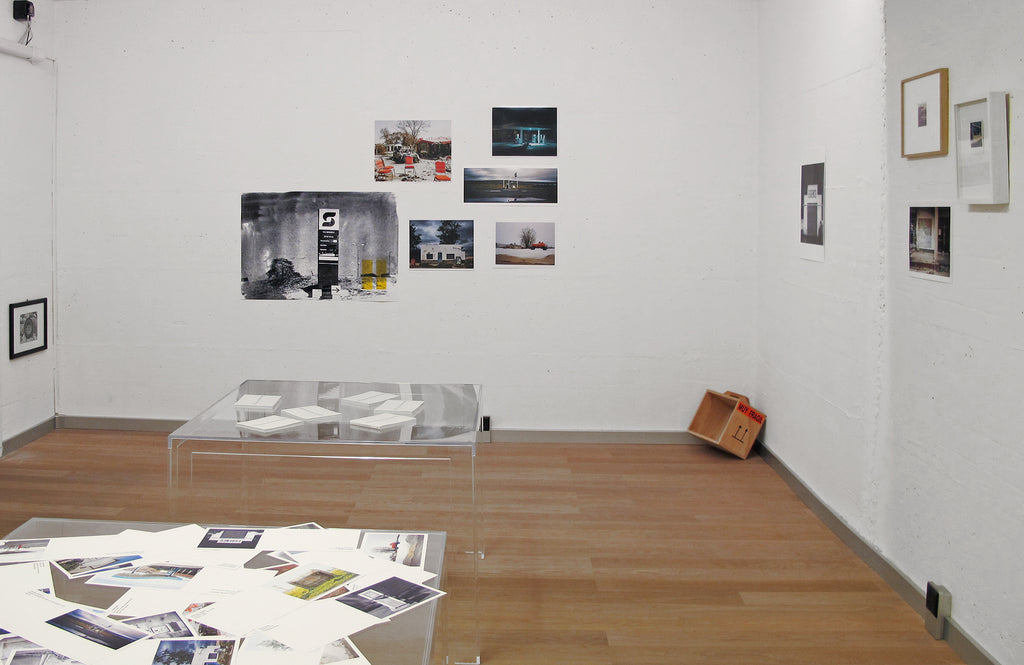
Exhibition period: September 1 - December 30, 2020
Venue: Spazio Choisi 01, Lugano
Curated by: Caterina De Pietri
Artists: Tonatiuh Ambrosetti, Alessandra Calò, Simone Casetta, Bruno Cattani, Gabriele Chiapparini/Camilla Marrese, Giuseppe Chietera, Marco D’Anna, Aline d’Auria, Matteo Di Giovanni, Délio Jasse, Milo Keller, Anastasia Khoroshilova, Ángel Marcos, Stefan Milosavljevic, Enrico Minasso, Maurizio Montagna, Davide Monteleone, Pino Musi, Igor Ponti, Luca Reffo, Caio Reisewitz, Carolina Sandretto, Laura Santamaria, Domenico Scarano, Fabio Tasca, Andrea Tonellotto, Salvatore Vitale, Jean-Marc Yersin
The start of 2020 gave no warning that only a few weeks later, our lives and our daily routine would change radically. Suddenly, a total stop: all still, confined at home, in isolation, limited by social distancing.
The idea to counter social isolation with a collective, choral, multi-handed book was Artphilein Editions’ riposte to impose a positive sense onto this juncture, one difficult for many and extremely tragic for others: Non-Gasoline Stations. So we sent the following message to a group of artists:
“The message repeatedly proclaimed in the media ‘after the end of the ongoing emergency, nothing will be like before’ is left open to decryption: intimidation, exhortation, annihilation or what? As an inevitable consequence of our forced immobility, in the meantime car traffic and, consequently, fuel consumption have dropped considerably. The future will tell us if and what will really change and if the car will continue to be a means of locomotion. Let's try to imagine that gasoline stations lose their function as fuel dispensers: they become obsolete, a historical find, an archaeological testimony of an outdated mode of transport.”
All the artists addressed with this message welcomed the invitation and sent their chosen image. Each image selected for this publication makes up a mosaic, the unifying link of which is given by the common atmosphere of suspended time, of transience, of fading.
The result of their replies, presented in chronological order, is collected in this book and in two exhibitions that will open in Lugano on September 1st, 2020.
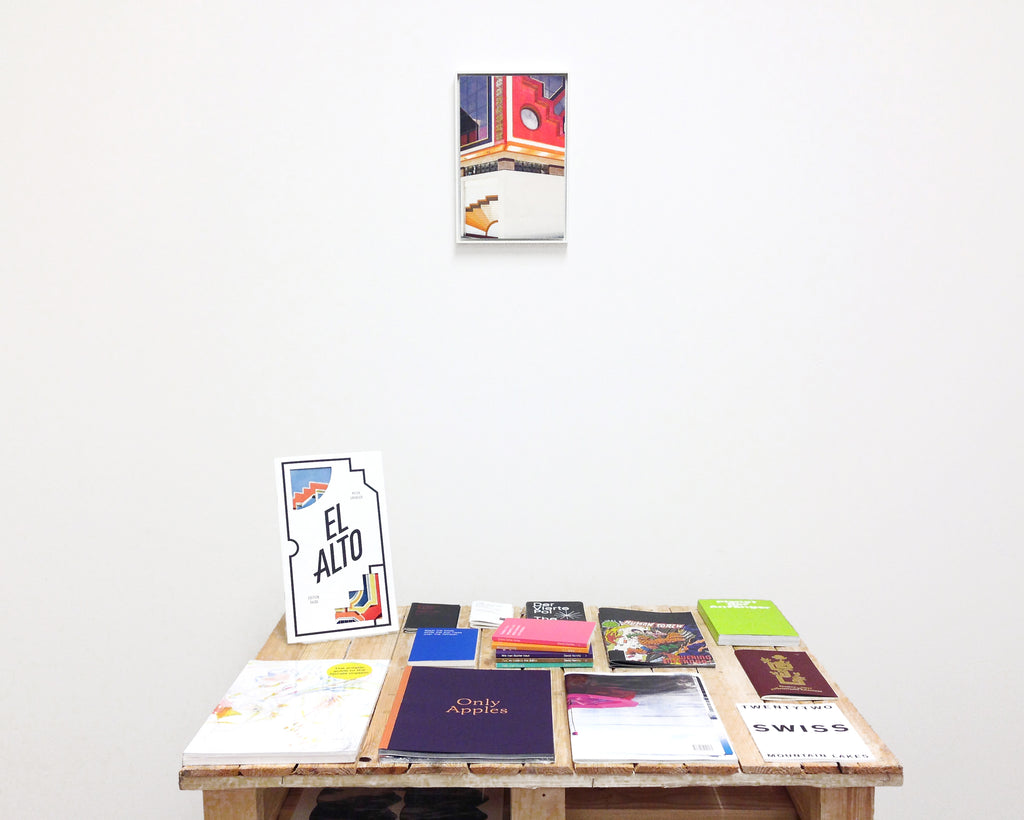
Pop-Up: May 14 - July 4, 2020
Curated by: Jan Steinbach
MATERIALE SATELLITE is a pop-up store with a selection of artists’ books chosen by Jan Steinbach, as part of his virtual residency at Choisi.
The selection includes artists’ books by Edition Taube , as well as special editions and publications – photobooks, artists’ books, zines, postcards – from Material, the space for book culture in Zürich.
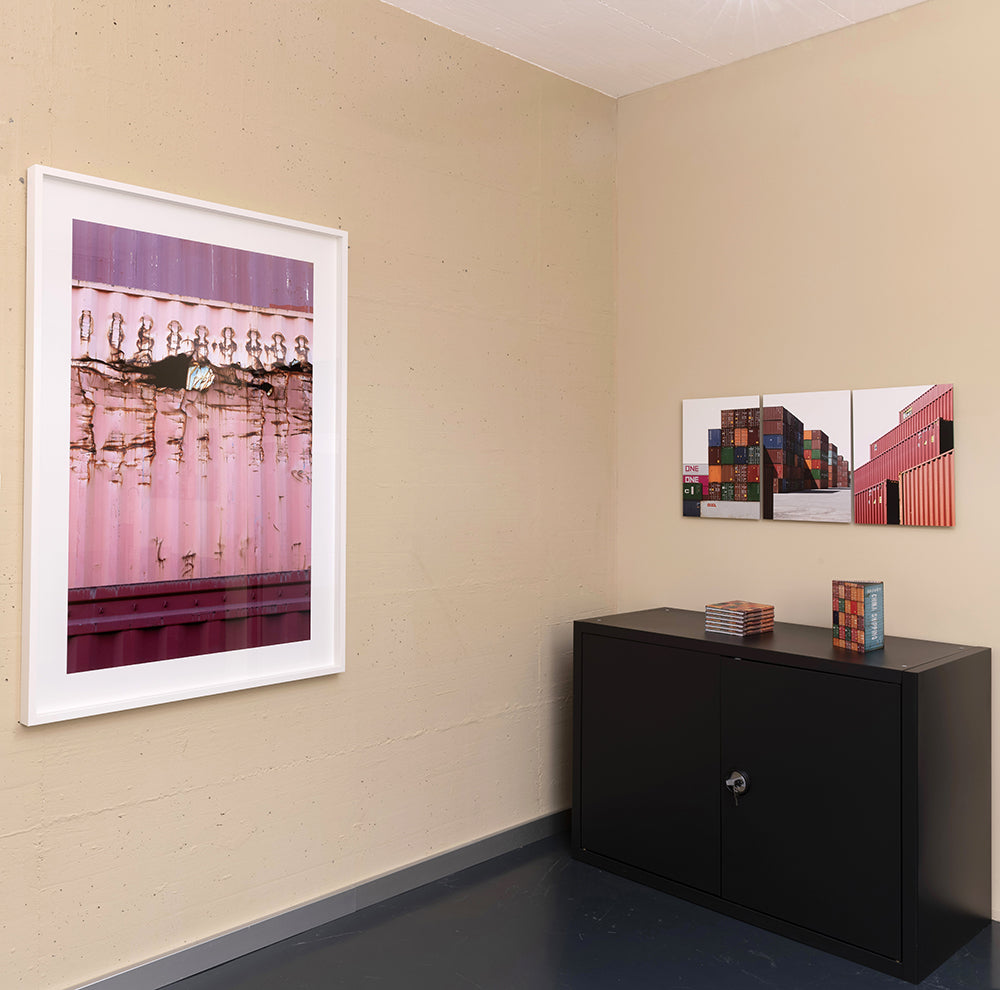
SPAZIO #2: 6 May - 13 September 2020
Spazio Choisi 02 is pleased to announce the opening of the new exhibition One Belt One Road by Marco D’Anna. The photographer presents his latest book, published by Artphilein Editions, in an installation designed specifically for the space, with photographs and special editions.
One Belt One Road reflects on a new Silk Route, investigated through a series of photographs of ‘landscapes’ of containers and an apparatus of texts about international shipping routes.
The project started off in a key moment of Marco D’Anna’s life, as he writes in the book:
years ago, during one of my journeys, I was on an Italian warship heading for the Gulf of Aden in Somalia, via the Suez Canal. We arrived by night at the anchorage, which is like a large parking lot where ships stop, form convoys and then cross the strait. We cast anchor too, and the following morning, just as dawn was breaking, I remember a sight: I saw cargo ships appear of a size I had never seen before in my life. They looked like spaceships coming out of the night – they were huge, one a scale I had never even seen in the Mediterranean. An apparition. It was like reading an Asimov novel or watching Star Wars: they were enormous, looming out of the semidarkness, and initially I couldn’t understand exactly what they were.
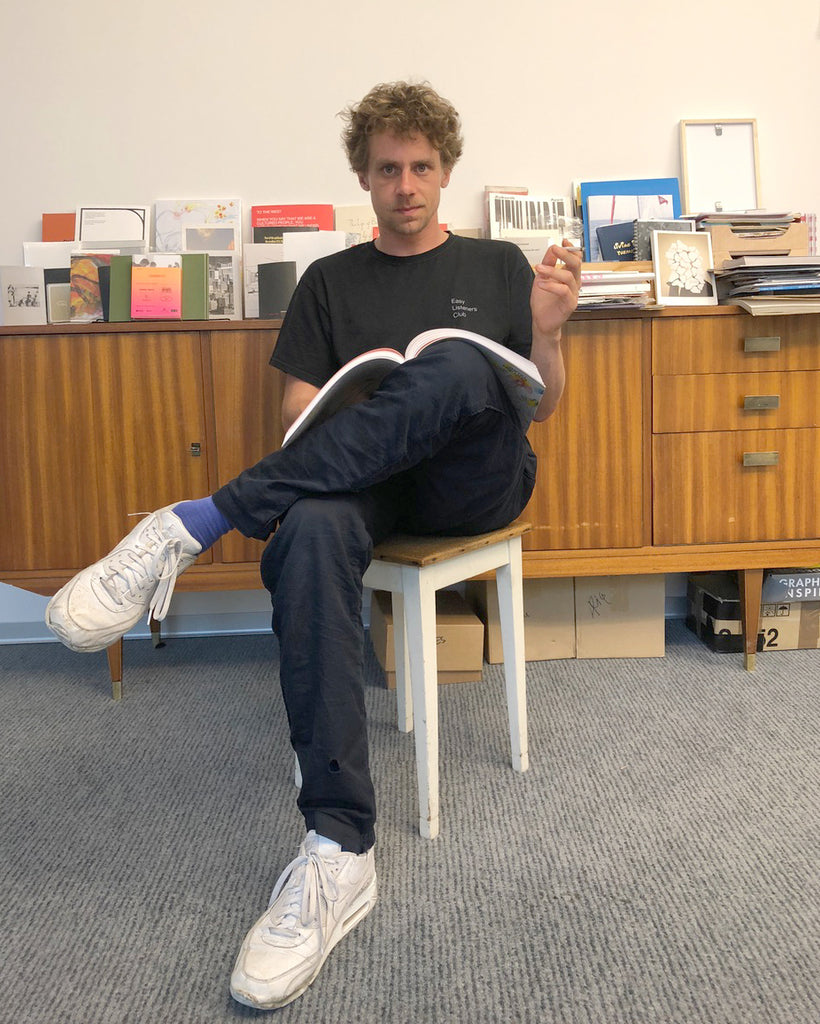
April / June 2020
An artist's book is an artwork conceived as a book, as opposed to a book displaying an artwork.
Jan Steinbach
We are happy to announce the new guest of Spazio Choisi 01: Jan Steinbach who conceived the online project edcat.
Jan Steinbach is one of the founders of the publishing house for artists' books Edition Taube together with Jonas Beuchert and Tilman Schlevogt and he is involved in the non-profit space for book culture MATERIAL in Zurich.
Through edcat, Jan Steinbach offers an open source database of art editions and publications, a unique information and resource platform, that can be accessed freely by everyone. As of now, it contains data on nearly 12,000 titles, entered and updated by artists, publishers, researchers, collectors and booksellers.
The independent art publishing universe is huge and manifold, and edcat offers a key of access and knowledge. This collaborative tool allows, in addition to the conservation of cultural information, an increase in the visibility and circulation of artists' publications.
On edcat, interested people can access info on art editions and publications, discover the new entries and create 'virtual' collections.
During the virtual residency, Jan Steinbach will process the data provided by Choisi Bookshop, transposing them within edcat.net and he will collaborate with the bookstore and the public library Artphilein Library in the creation of "online" stories on photobooks and artist’s books.
We invite artists and publishers to add their publications here: edcat.net/items/new and to send your books to Choisi Bookstore, if you'd like them to be shown or sold at the bookstore, as soon as it will reopen to the public.
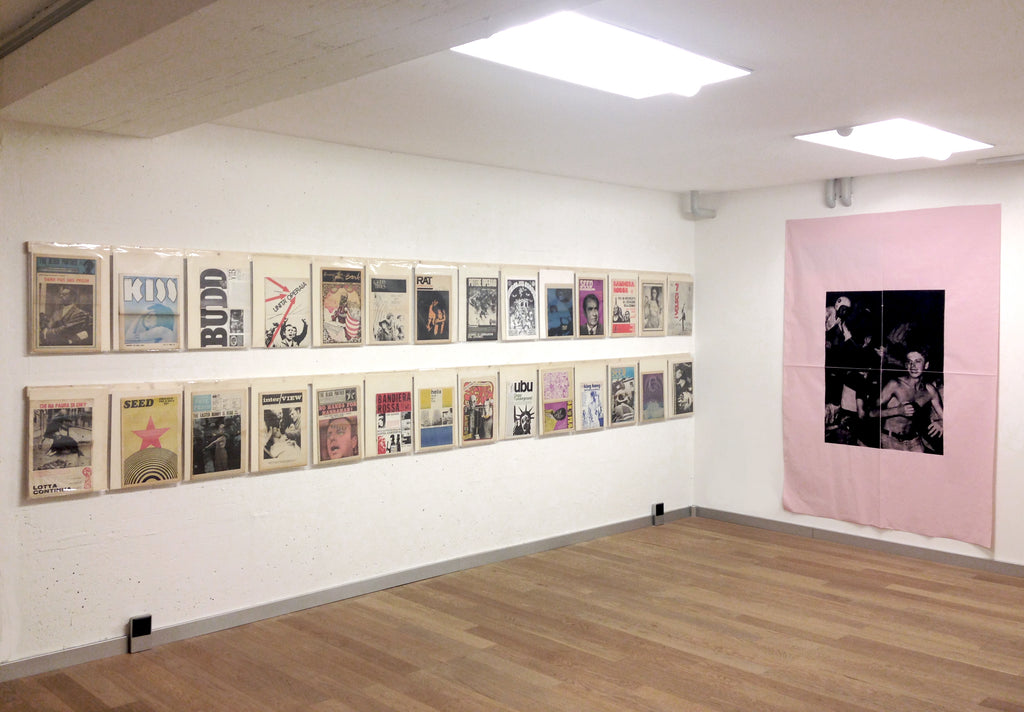
Exhibition period: January 14 - March 10, 2020
The new guests of Spazio Choisi 01 are a+mbookstore (Milan) and Viaindustriae (Foligno), two Italian publishers who will transform Spazio Choisi into an unusual archive dedicated to alternative, underground and counter-cultural press between 1966 and 1977.
The display presents the publication YES YES YES Alternative Press '66 / '77 from Provo to Punk and it is the preview of the new research YES YES YES Revolutionary Press in Italy '66 / '77 from Mondo Beat to Zut.
Both the publications are visual essays, books of images that examine the role of the alternative printing.
Publishers, authors, radical figures of that scene, interviewed and involved in the books, rethink those actions and publications that touched the issues of the social urgency of change.
YES YES YES mainly analyses the visual culture of "cheap" magazines, their amazing graphic design and their free aesthetics, integrated with the system of radical artistic and political activisms. In this way, the pages of the newspapers and loose sheets deal with facts through innovative texts, with the subversive style of that fervent climate that formed a social network of printers, creative independent realities and trade unions for distribution.
In this innovation of the system, the democratization of printing stimulated the experimentation in graphic design and the growth of the publishing practice in an expanded culture opened to the community.
The display will include part of the archival materials from the Italian scene of the same years, which will compose the new publication YES YES YES Revolutionary Press in Italy '66 / '77 from Mondo Beat to Zut.
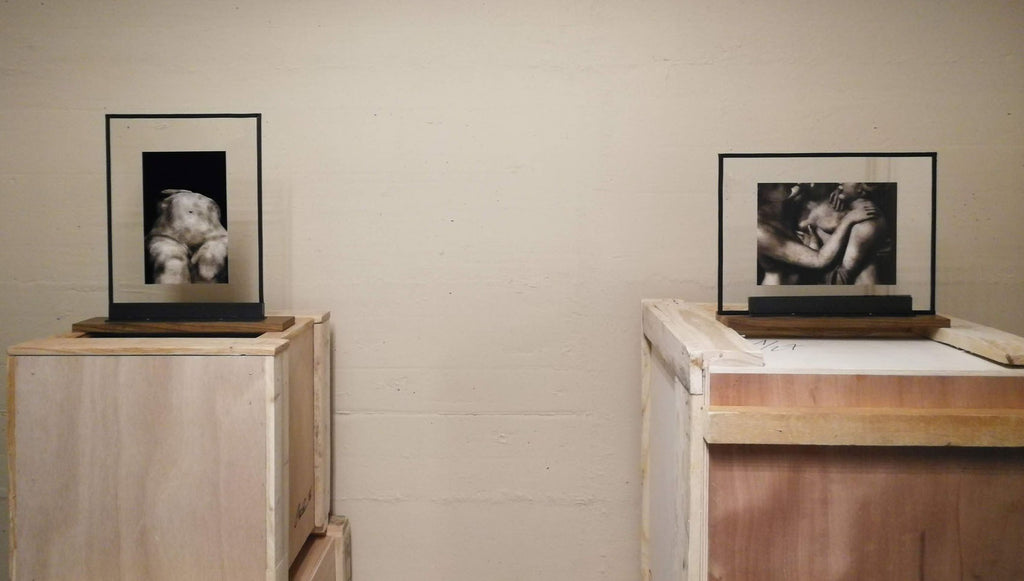
Nel nuovo Spazio Choisi #2 si terrà la presentazione del libro fotografico EROS di Bruno Cattani, pubblicato da Artphilein Editions, accompagnata da una selezione di immagini dell'omonima serie (courtesy Heillandi Gallery).

until January 7, 2020
The new guests of Spazio Choisi are the photographer Jeff Mermelstein and the publisher Aron Morel, with their new book Hardened, edited by David Campany.
The book gathers a sequence of 305 photographs taken in more than 2 years in the streets of New York and it will be presented inside a site-specific installation designed for Spazio Choisi.
"These are just some of Jeff Mermelstein’s pictures taken mainly on the streets of New York in the last few years. A world of everyday neurosis, minor catastrophe, panic, charm, indiscretion, revelation, fallen pride, deflated bravado, pricked narcissism, and unexpected affection. In a culture in which seemingly everything is contrived for the camera, it is heartening, and horrifying, to see what it looks like when it doesn’t think it is being photographed, or at least photographed the way Jeff Mermelstein does it."
David Campany
On this occasion, at Artphilein Library will be displayed one of the exclusive two special editions of Hardened, thanks to the acquisition by De Pietri Artphilein Foundation (the other edition will be available for consultation at the New York Public Library).
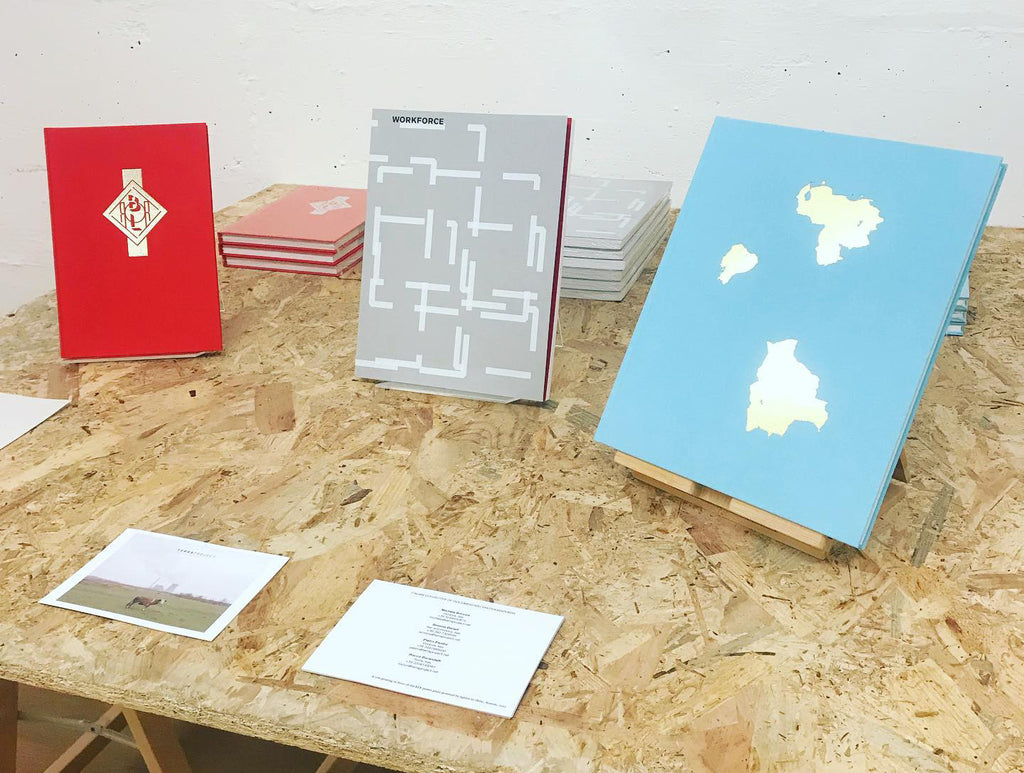
until October 23, 2019
The third guest at Spazio Choisi is the collective of documentary photographers TerraProject, founded in Italy in 2006 by Michele Borzoni, Simone Donati, Pietro Paolini and Rocco Rorandelli.
With an eye on both the Italian reality and the most relevant social and environmental issues, the members of TerraProject have produced numerous individual and group projects, experimenting with an original collective writing approach.
At Spazio Choisi they present their publishing projects, together with the video projection of an excerpt from Michele Borzoni’s project Workforce.
TerraProject photographers have received many prestigious international awards including the World Press Photo (2010 and 2012), the Canon Prize (2010), the Pesaresi award for Contemporary Photograohy (2013) and Graziadei Award (2014).
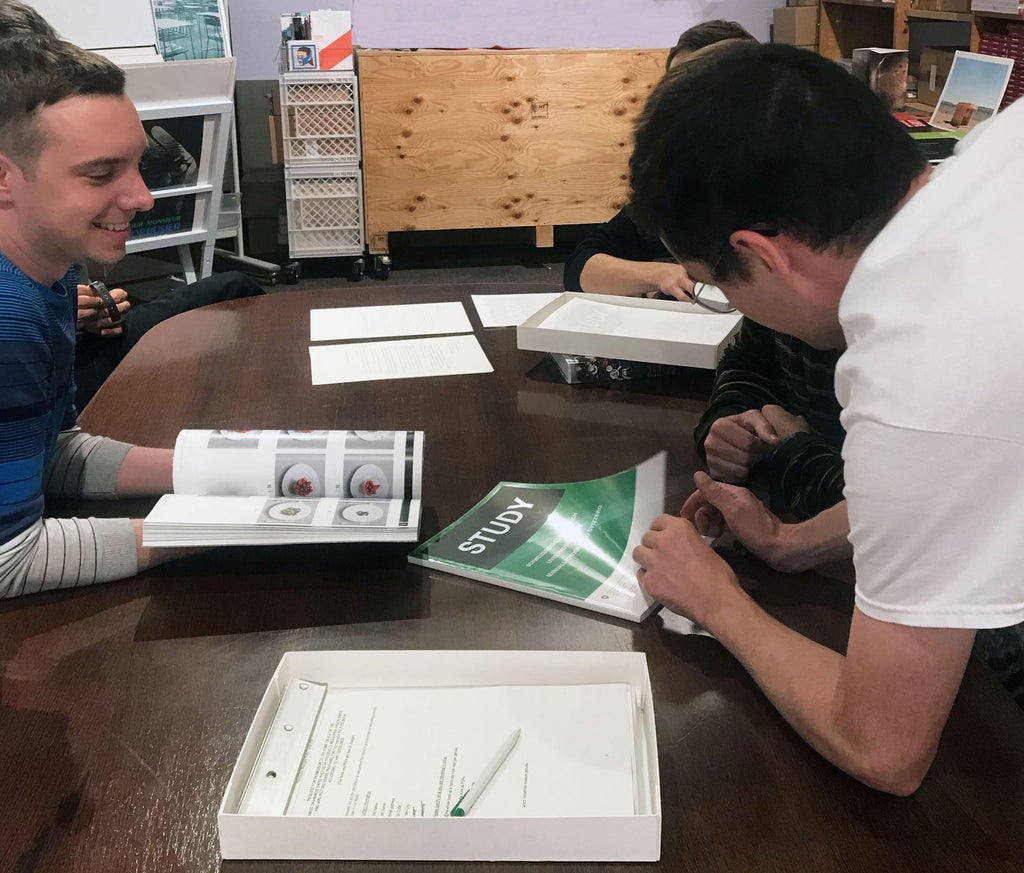
The ‹Manuale Fotografico Svizzero› was produced by the Swiss Government for a state-wide study on nutrition. It depicts 618 photographs of food in various portion sizes allowing study participants to make qualified statements about their diet.
Jan Hofer and Severin Zaugg invite you to examine this book as a telling object in its own right.
Come have a look and sign-up.
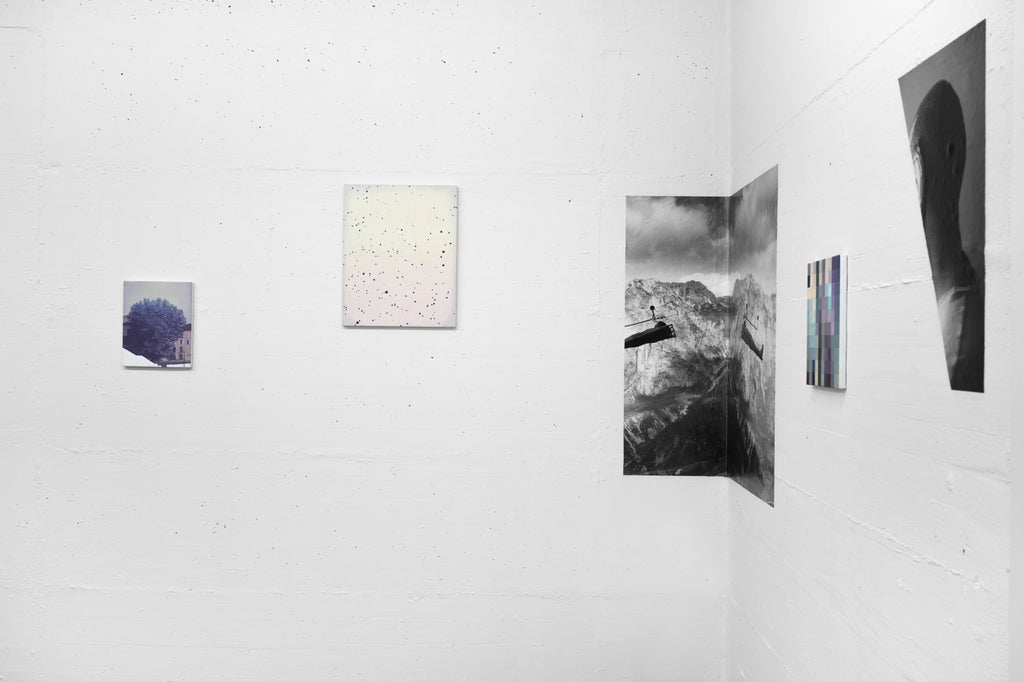
until September 20, 2019
The second guest of Spazio Choisi is Luca Reffo of Départ Pour L’Image.
He presents 444 / Celestial Means of Locomotion, a site-specific project, which combines photography, painting, drawing and publishing.
444 is the name of an ongoing project of Celestial Means of Locomotion published by Départ Pour L’Image Edition, which consists of collecting a selection of works including paintings, photographs, and drawings.
The project is a creation of a reflection around the exceptional nature of 444 days, an interval of time in which Van Gogh transformed Arles and all of its surrounding territory, from Montmajour to Sainte-Marie-de-la-Mer, from Fontevieille to the countryside of Provence, in an open-air study.
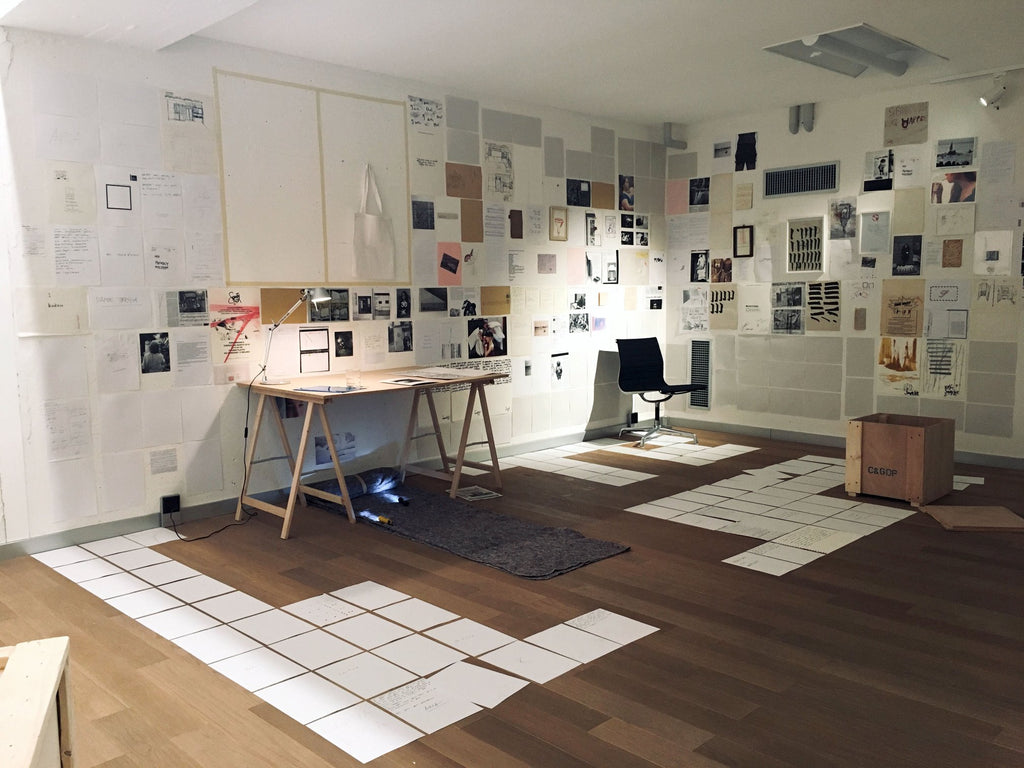
until May 31, 2019
Choisi Bookshop inaugurates the new Spazio Choisi.
To pursuit its dynamic nature, the bookshop is now also including a white space, a project room, ready to be reconfigured every season and to welcome the most interesting international realities in the art and photography publishing scene: artists / publishers, residency programs, newsstands, local festivals, with the common interest in art publishing practices and contemporary photography.
Spazio Choisi is located next to Choisi bookshop.
The first guest of Spazio Choisi is Giulia Currà of Traslochi Emotivi. On this occasion she will present the new issue of the publication PAGe #15 in collaboration with the Canadian photographer and multimedia artist Leah Singer, in a suggestive installation designed specifically for the space.
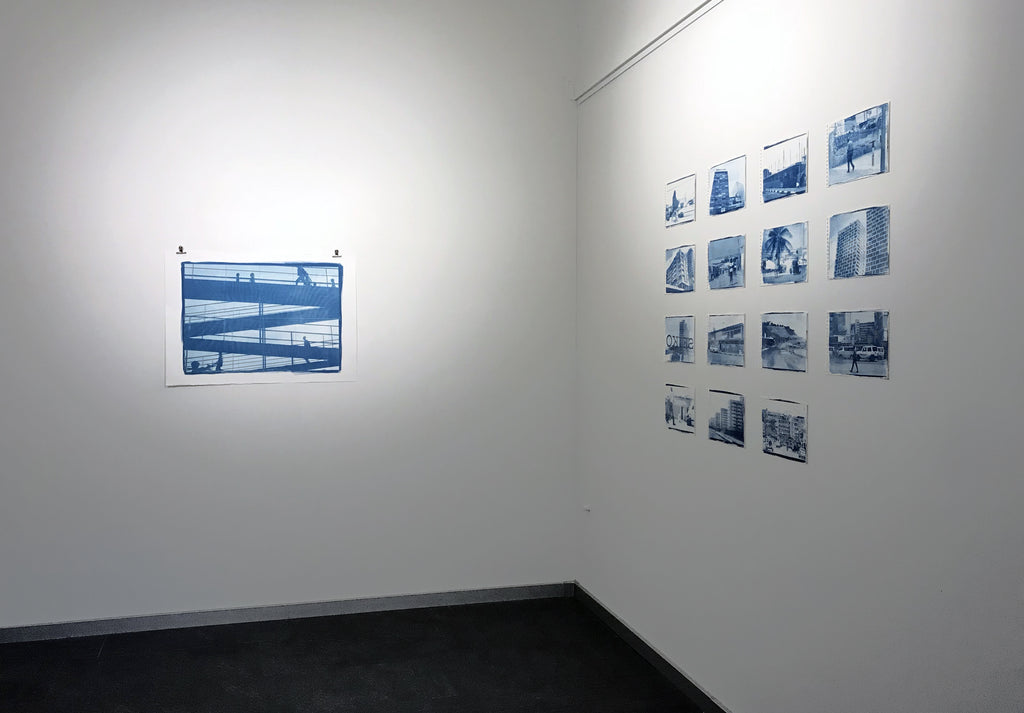
On Thursday 14th December, at Choisi Bookshop, Delio Jasse presented his first artist's book, Cidade em movimento, published by Artphilein Editions.
The publication collects a series of cyanotypes that explores Luanda, the capital city of Angola, through contemporary architectures, abandoned buildings and places where the traces of a colonial past persist.
On the occasion of the book launch, at Choisi bookshop, a new series of photographs will be exhibited, on display until December 23rd.
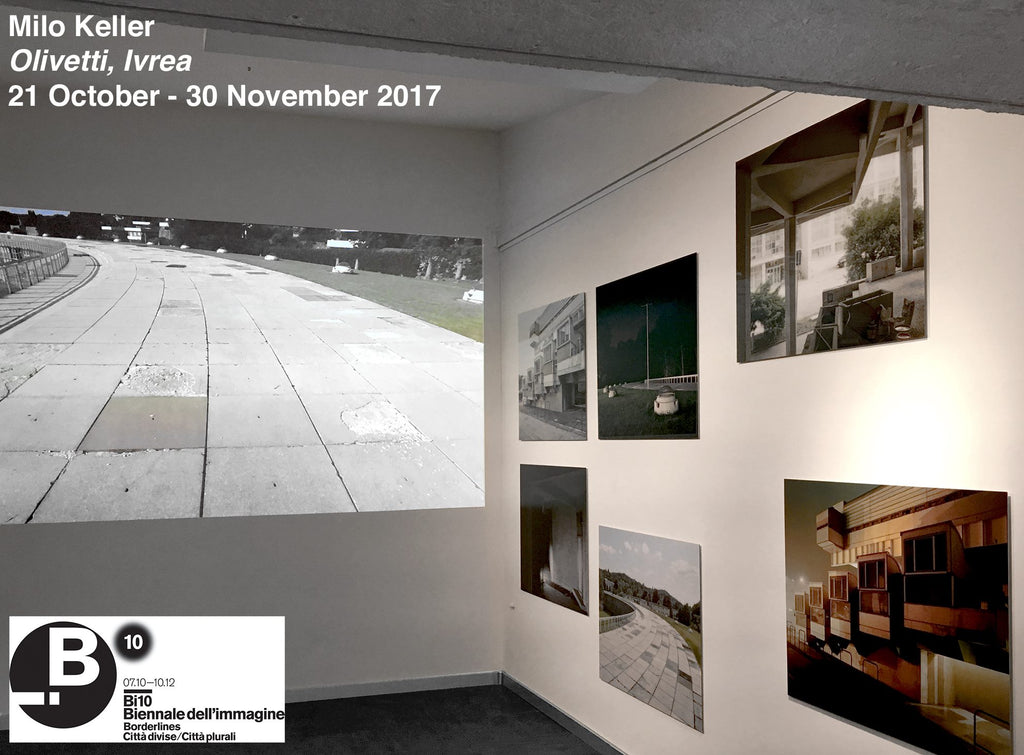
The exhibition Olivetti, Ivrea of Milo Keller is on display at Choisi-one at a time in the context of Bi10 - Borderlines. Divided Cities/ Plural Cities, the tenth edition of the Biennale dell’immagine.
The artist seized this invitation as a stimulus to deepen the photographic research on the Olivetti district in Ivrea with a new daytime photographic series, which interacts both on the formal and conceptual levels symmetrically with the first nocturnal series created in 2007.
Adriano Olivetti transformed the family business of a small manufacturer of typewriters in a hugh international group. At his invitation artists, philosophers, product and graphic designers, architects, writers and sociologists came to Ivrea in the intent to sketch the profile of new factories and offices, as well as to conceive a new community reconciling mankind and technology.
With the premature death of Adriano Olivetti, the humanistic ideals, the theoretical and applied researches applied to the neighbourhood vanished and Ivrea, formerly an ultramodern and technological experimental city, is now deserted, but Milo Keller's images relay the wish that Olivetti's intentions don’t fall in oblivion.
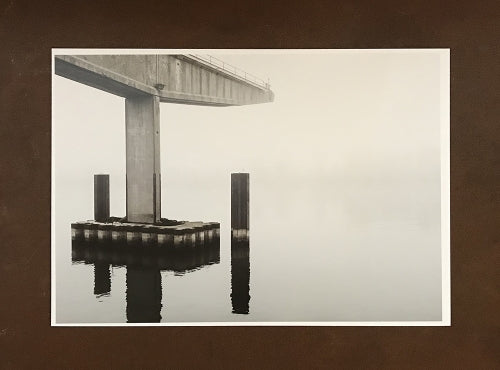
"Today more than ever we are back to talk about “boundaries” in the geographical sense of the term. Boundaries are invisible and imaginary lines that separate –by crossing them– two states, two conditions of often imperceptible or sometimes evident differences.
Words mix together to provide different meanings and at the same time similar to each other.
Geographical limit and behavioral limit, margins and marginalization, block, uncertainty, edges, barrier, delimitation, separation.
Landscape and behavior; landscape and human being.
Border [line] sums up a possible way to read the landscape and its analogies with mankind, overall providing a noir outcome."
(Domenico Scarano)
Exhibition: 15th September - 20th October 2017
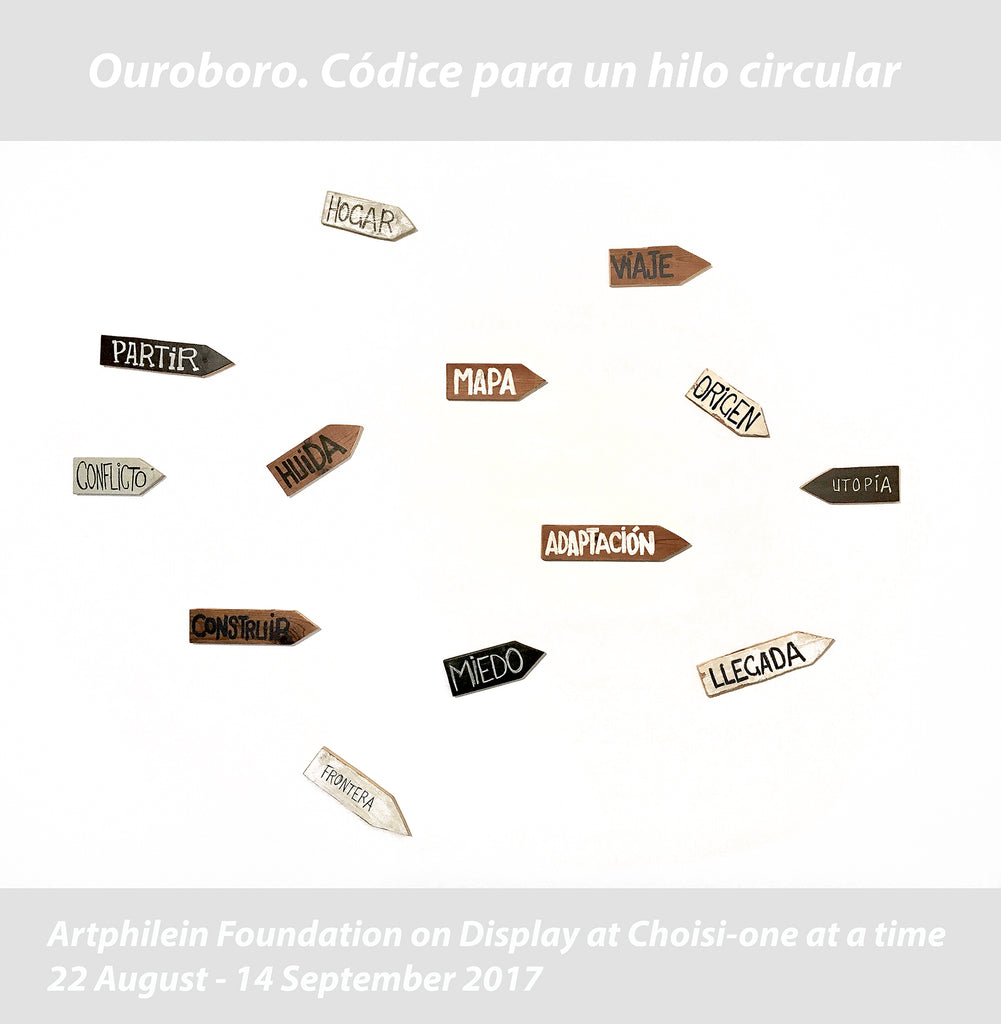
In 2011 the artists Carlos Albalá and Ignasi López created Proyecto BSide, with the aim to explore the territory and urban development through practices of investigations performances, cultural exchanges and independent and and self-managed publications. Drawing inspiration from uroboros, the symbolic snake swalloing its tail and thus forming a circle without beginning or end, the project Ouroboro. Codice para un hilo circular (Ouroboros. Codex for a circular thread, 2013) intended to offer a collaborative happening of analysis of the territory and its mapping, through artists’ residences at La Fragua (an art center located in the cloister nunnery of Santa Clara de Belalcazar, located north of Cordoba, near the border between Andalusia and Extremadura), workshops, discussions, actions in public spaces, exhibitions and the publication of a twisting book, an endless journey in ceaseless run, an intimate and concurrently shared stroll within a territory experienced by the participating artists (Ignasi López, Carlos Albalá, Pilar Barrionuevo, Gerard Boyer, David Flores, Marcos Isabel and Juanan Requena). The project was achieved thanks to a crowd-funding. On display are, from the collection of Artphilein Foundation, the collaborative work of the aforesaid artists, with the driving and accompanying words of this project and the artist book Ouroboro. Códice para a hilo circular.
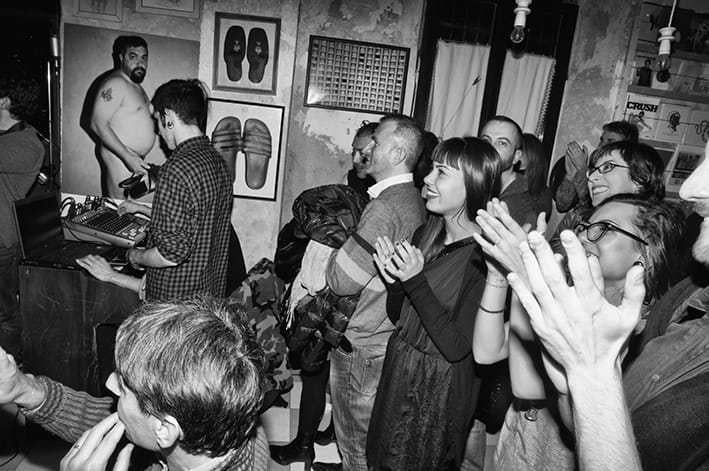
In July, Choisi is displaying a selection of Jacopo Benassi's photos from the series The eyes can see what the mouth can not. On the occasion of the exhibition, on Wednesday 12th at 7:00 PM, Benassi will launch the book with a live DJ set.
The eyes can see what the mouth can not is an exhibition and a book in which musicians performing are never seen.
"A series of images of people looking. I would rather say, contemplating. The Latins said contemplatio – the prefix con expressesing a connection, and templum denoting a defined area. People in Benassi’s images are strongly connected and the area is defined. There is a geography made of scraped walls, images inside the images, signs on the walls, details of furniture, symbols. People inhabiting this geography are looking and listening." (Giulia Zorzi)
Btomic was run by a group of friends: Gianluca Petriccione, Lorenzo D’Anteo, Roberto Buratta and Jacopo Benassi. Opened 2011, closed 2015 for lack of money, hosted many performances and live concerts. Among the musicians, Teho Tehardo, Jozef van Wissem, Chris Imler, Julia Kent , Mary Ocher, Lydia Lunch, F.M Palumbo, Embryo, Lori Goldston, Hugo Race, Tav Falco, Carla Bozulich, Andrea Belfi, Lubomyr Melnyk, Ernesto Tommasini, Matt Eliot, Z’EV, Sir Richard Bishop, Six Organs Admittance, Emidio Clementi, Khan, Mangiacassette, Baby Dee, Eugene Chadbourne, and many more.
Thanks to Giulia Zorzi and Flavio Franzoni of Micamera, Milano.
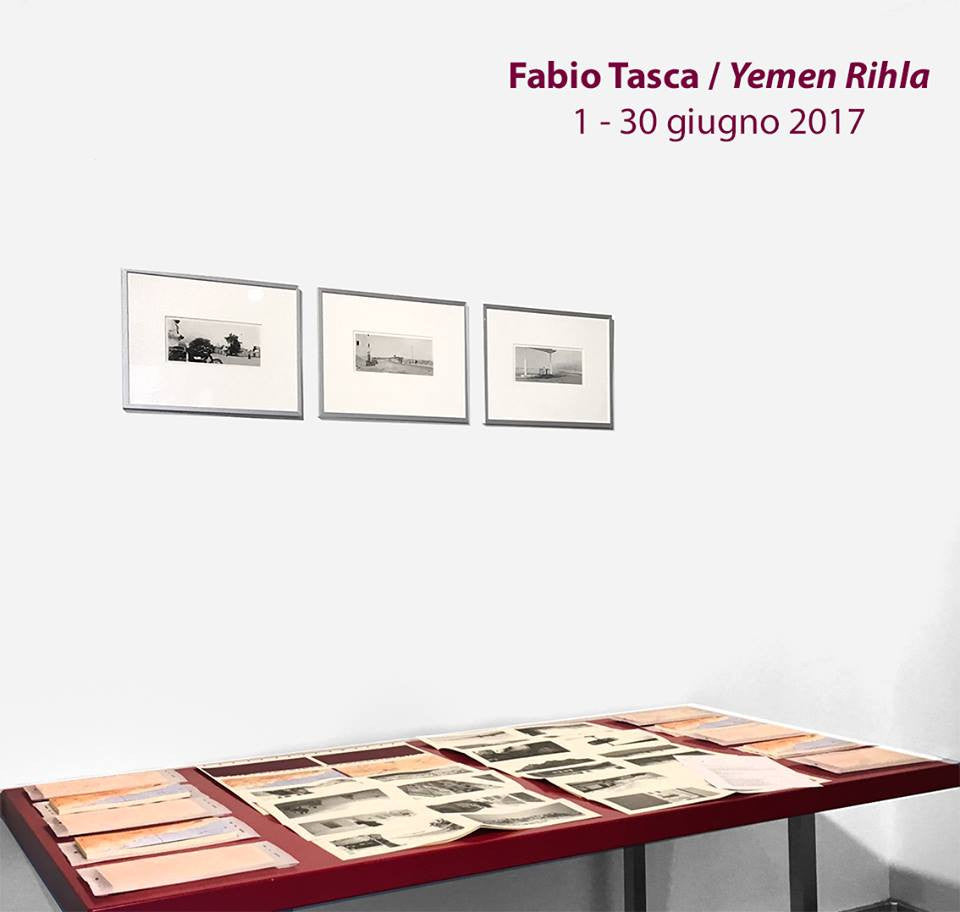
Exhibition: 1 – 30 June 2017
Book launch and signing: 8 June 2017
The photographic project contained in the book Yemen Rihla is a testimony to a not particularly tumultuous period of the tormented Arab state, placed halfway between the reunification and the Arab Spring and the subsequent bloody civil war.
The photographs were taken with a medium-sensitivity film with a slight grain that emphasizes the rough surfaces that characterize the harsh Yemeni environment.
The choice of the landscape format, combined with the frequent use of wide-angle lenses, arises from the need to highlight the vastness of the landscape while trying to melt in it the human figures that often appear truncated, cut and partial.
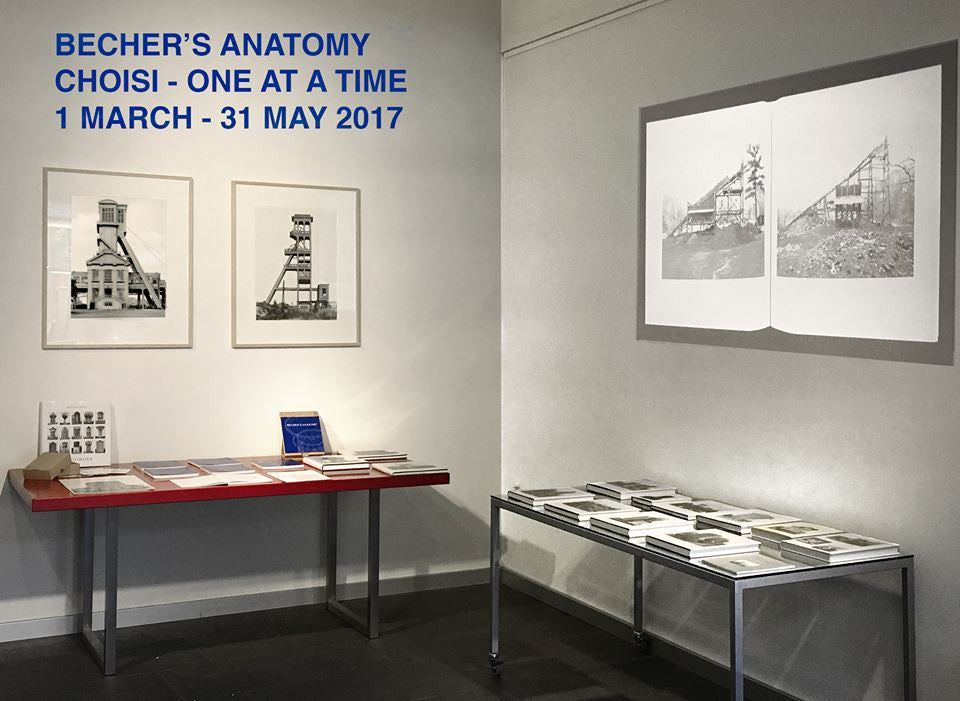
|
From March 1st to May 31st, on the occasion of the presentation of Becher's Anatomy, published by Artphilein Editions in collaboration with the Academy of architecture of Mendrisio, the photo books of Bernd and Hilla Becher in the collection of Artphilein Foundation will be on display at the bookshop Choisi. Bernd Becher (1931-2007) and Hilla Becher Wobeser (1934-2015) devoted their artistic research to the production of a 'catalog' of industrial archaeological objects built between 1870 and 1960, located in Europe and the US. They implemented a formal and artistic policy, which they called 'grammar' in order to be able to systematically define and proceed on such a vast subject. The photo books were crucial in their quest: in each monograph on a type of industrial artifact, the artists wrote a text containing information on function, construction modes, technical solutions and the justification of their formal analytical interest. In the book Becher’s Anatomy the documentary aspects of Bernd and Hilla Becher's photographs are analyzed and deconstructed, with the aim of refocusing the view on the intrinsic characteristics of the artifacts investigated by each student. Becher's Anatomy, in correlation with the photo books on display, leads the way to new perspectives and interpretations of Bernd and Hilla Becher's photographs. |
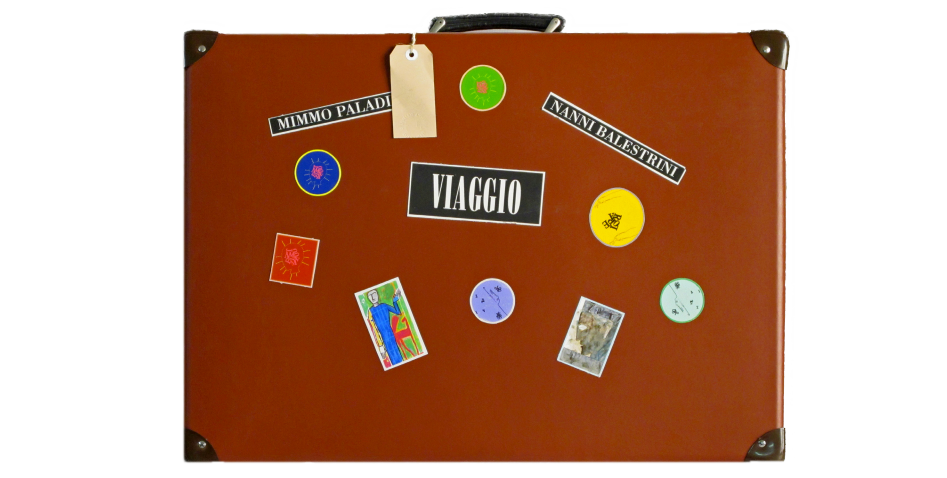
Shifting in continual movement
in relation to a fixed place
in relation to an observer
who only passes by
the point of departure.
Nanni Balestrini
In January and February, Choisi presents “Viaggio” (Journey), a compilation of twenty plates, realised by Mimmo Paladino with mixed media techniques (etching, aquatint, inkjet, copperplate engraving, woodcut and collage), on poems by Nanni Balestrini.
This artistic project was implemented thanks to the initiative of the editor Luigi Berardinelli, Verona, from 2004 to 2006.
The compilation is contained in a cardboard suitcase.
The partnership between the artist and the poet for “Viaggio” was powerful. Words and images amalgamate and conduct the viewer on a varied and engaging trail:
“The basic idea was to tackle a series of white sheets in the same way you might undertake a journey, stopover by stopover, experience by experience.”
Luigi Berardinelli
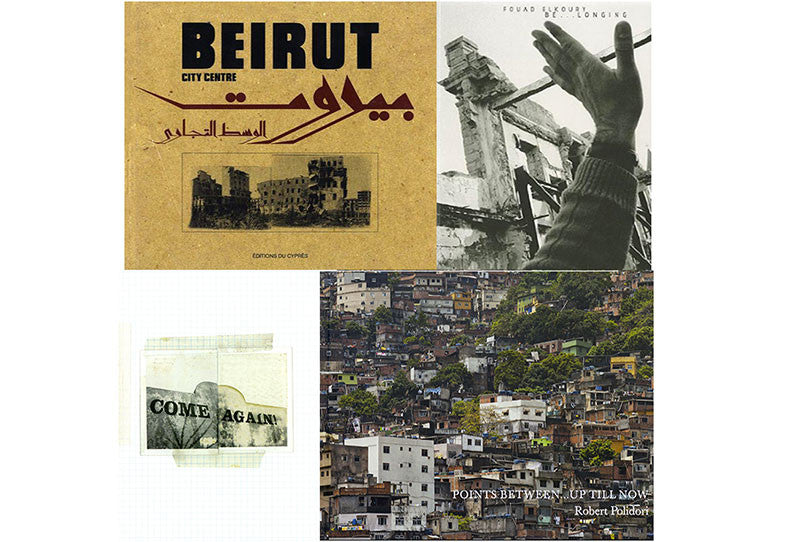
From October to December 2016, Choisi - one at a time presents Beirut – The Photobooks, a distinctive section of books from the Artphilein Foundation collection.
The Foundation first approached the theme of Beirut through the artworks by the Lebanese artists Walid Raad and Randa Mirza. Afterwards, lead by an interest on the theme of memory, the research resolved to focus rather on photobooks.
Many artists of different generations and educational backgrounds chose this artistic medium in order to depict Beirut from different points of view: the urban structure, the social stratification, the evolution of the society, as well as the postwar reconstruction and the attempts to adapt the city to the needs of contemporary life.
The photobooks on Beirut and Lebanon –in the collection of Artphilein Foundation– allow an insight in the interpretation of traumatic events of recent history.
After many researches on this city, Artphilein Foundation is happy to share with the public the extraordinary variety of photographic experiences, where Beirut is either the focal point, or the transit station or the final destination of a journey.
Gian Franco Ragno, critic and historian of photography, has been commissioned by Artphilein Foundation to write a text proposing a personal reading of the city of Beirut through these photobooks of the collection.
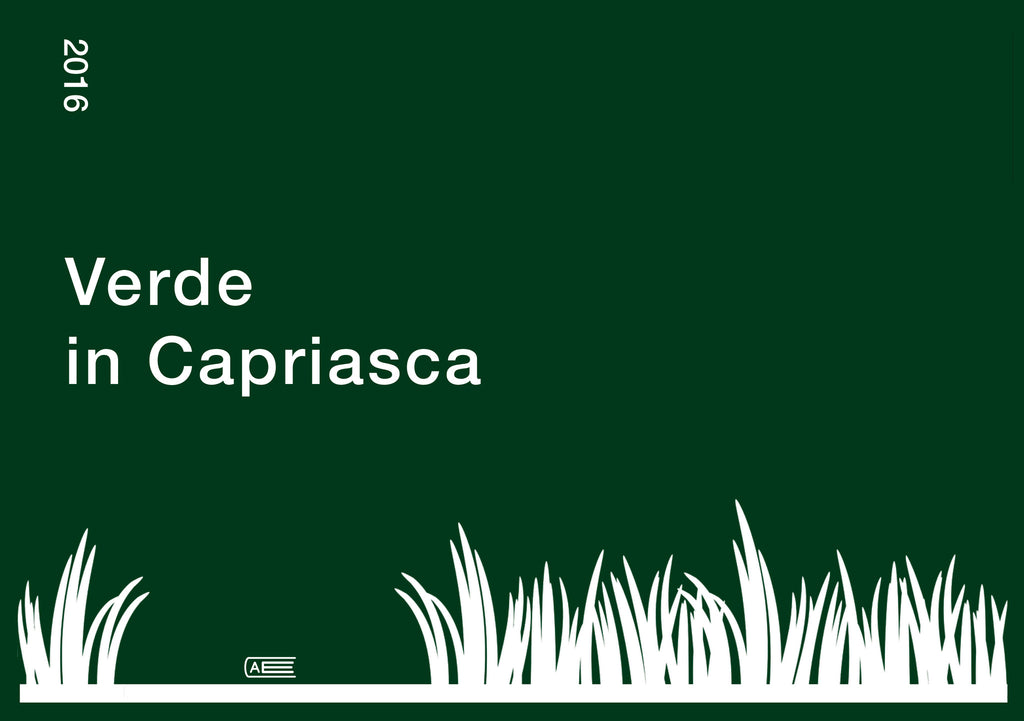
Giovedì 29 settembre, alle ore 17.30, presso Choisi – one at a time, si terrà la premiazione del vincitore del concorso fotografico "Verde in Capriasca".
Questa iniziativa di Choisi – one at a time è selezionata e inserita nella campagna nazionale dell’Anno del giardino 2016, per la conservazione e lo sviluppo degli spazi liberi e dei giardini, fondamentali per una densificazione territoriale di qualità.
Con questo terzo concorso si conclude il viaggio fotografico in Capriasca, dopo le precedenti edizioni “Lugano – Tesserete. Evoluzione di un percorso ferroviario” (2014) e “Architettura in Capriasca” (2015).
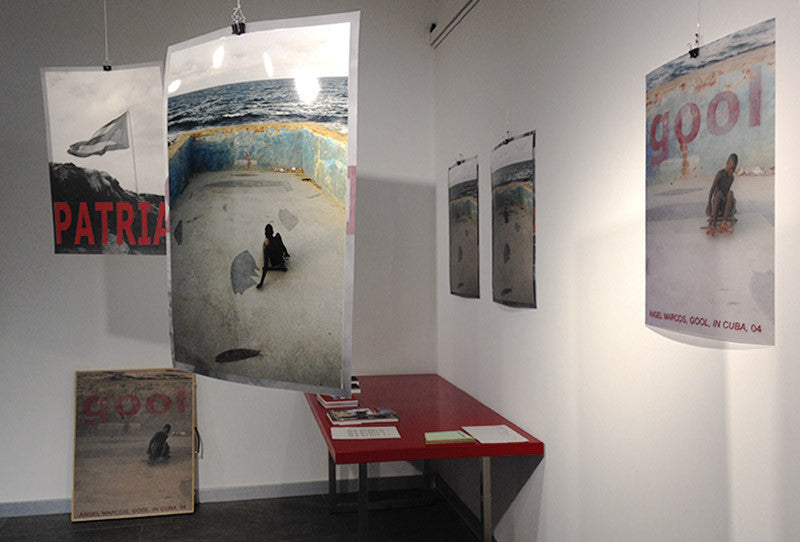
In September, on the occasion of the display of Artphilein Foundation collection, Choisi - one at a time presents "Gool" (2004) by Ángel Marcos.
The photo series "Gool - In Cuba" is part of the project "Around the Dream", the trilogy that Marcos dedicates to three very different geographical places: New York, Cuba, China.
The artist considers New York as the West, intended as a generator of new aspirations and achievements, Cuba as the symbol of Communism and China as a possible combination of the social, political and economic aspects of New York and Cuba: a country with an economy based on unrestrained market, lead by a strict Communist government.
In depicting Cuba, Marcos demonstrates an interest in the contrast between the power and the political propaganda and the real aspirations and needs of the people. Marcos explains: "Havana is a phantasmagorical place. After the impressive architecture of New York, I changed scenery... I exchanged abundance with lack. I kept on working on the means of power and their relentless presence in the everyday life."
Ángel Marcos is born in Medina del Campo, Valladolid, in 1955. His works are exhibited in Spanish and international museums; in 2013 he participated in the 55th Venice Biennale (parallel event at the San Pasquale School); in 2009 at the X Bienal de la Habana, Cuba; in 2006 at the Bienal del Fuego, Museo de Bellas Artes de Caracas, Venezuela.
On the occasion of the 55th Venice Biennale, Arphilein Foundation supported the realization of Ángel Marcos's book "The intimate subversion", published by Eikon, Wien, in 2013.
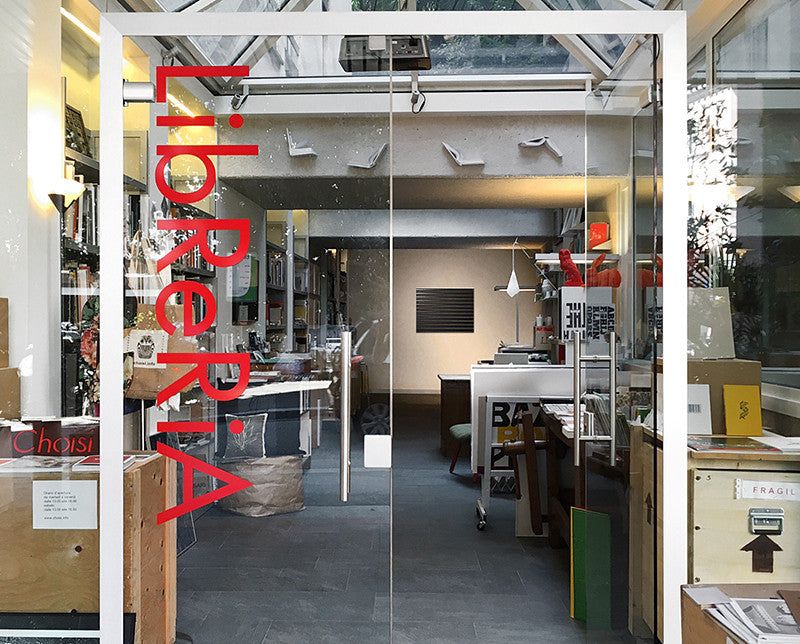
Choisi - one at a time proposes a reflection on visual perception, with Max Cole's artwork Malachi (1999) from the Artphilein Foundation collection.
The artist realises her artworks in a state of total concentration and immersion, by using the parameters she fixed and has been following since decades: a reduced range of colors, a particular attention to the background,which is composed of multiple layers of rubbed and sanded color, a free hand diagram of short strokes, from top to bottom, from left to right. The vertical and horizontal lines are the primary and distinguishing elements of Max Cole's works, who don’t seek the formal perfection in the execution. Only at first glance her paintings appear geometric and abstract, but with a greater attention their vibrations and rhythms come up with a special ever different experience of visual perception.
The display is completed by the projection of some Max Cole's thoughts about art. The artworks on display from the Artphilein Foundation collection are on permanent consignment at the Kunstmuseum in Vaduz.
Max Cole was born in 1937 in Hodgeman County, Kansas; she lives and works in California. Her works are part of many important art collections such as the ones of Metropolitan Museum and MoMA in New York, Los Angeles County Museum of Art, Collezione Panza di Biumo in Varese, Museum of Modern Art in Wuppertal, Ingolstadt, Koln and Munich, Mies Van der Rohe House in Berlin.

In July 2016, on the occasion of the monthly display of the Artphilein Foundation collection, Choisi presents the video Tourist (1984) by Barbara Hammer.
In her art practice, Barbara Hammer uses the videocamera, the photography, the performance and the installation. The artist is considered a pioneer of the experimentation on moving images and optical perception.
The corpus of her films includes more than 80 titles, since the 60’s characterized by a complex technical syntax, such as the layering of overlapping images, collage, coloring, alteration, decomposition and transformation of perspective (deframing), solarisation, sound effects and the manipulation of the film during the post-production phase.
In Tourist, Barbara Hammer depicts a trip to Europe: the flow of images is manipulated with a syncopated rhythm to alter the perception of places that appear well-known and to instill a feeling of anxiety and alienation. In the video, the journey is not the experience of a relaxing break, but a stressful activity led by the fear of losing something.
Barbara Hammer lives and works in New York. Her major retrospectives took place at the MoMA of New York (2010); at the Tate Modern in London (2012); at Jeu de Paume in Paris (2012) and at the Toronto International Film Festival (2013).
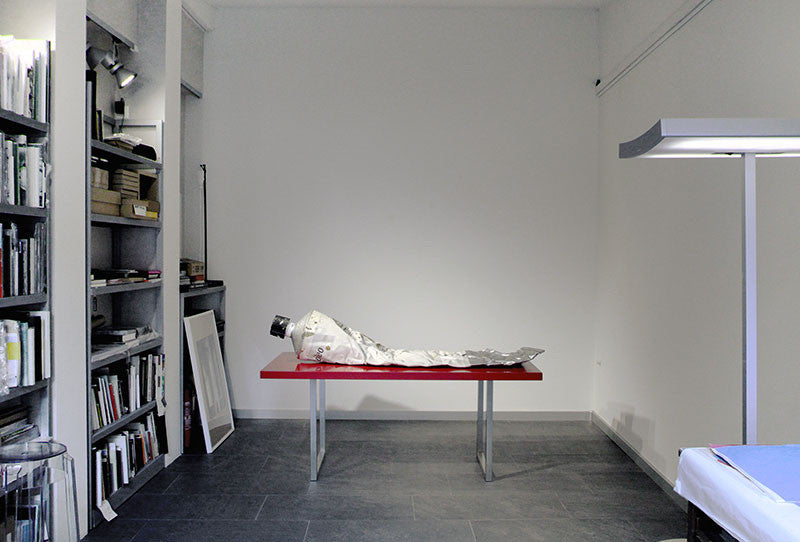
In June 2016, on the occasion of the monthly exhibition of the Artphilein Foundation collection, Choisi presents the sculpture Macro II by Rómulo Celdrán.
Macro II (cm 184 x 57 x 36) is a polychrome polystyrene sculpture realised in 2008, with painstaking accuracy and great technical ability. In the series entitled Macro (for the sculptures) and Zoom (for the drawings), the artist draws inspiration from everyday objects and he reinterprets them by enlargement:
“Zoom and Macro act as camera lenses, graduating the scale of measurements with which we perceive what we look at and breaking down the correspondence between the real size of an objects and the size that we perceive depending on how far away from it we are. They act as a kind of traditional magnifying glass that draws us closer to the object worthy of observation even when we keep an appropriate distance in order to view it.
The concepts of Zoom and Macro give the object new dimensions, strengthening its presence and inviting us to explore it, discovering hidden spaces and unnoticed nooks. They break down the physical laws that govern our logic as observers and place us before a growing world, with the same consequences that we would see as Shrinking Men walking through a reality made up of objects whose unsuitable size renders them functionally useless, existing on a scale that is no longer human.
Discovery, surprise and, of course, irony, are aspects that I would like to see hovering around this series of works.
Reality does not exist. And if what exists is the perception that we have of it, why not explore the underlying principles of that perception?”
(Romulo Celdran)
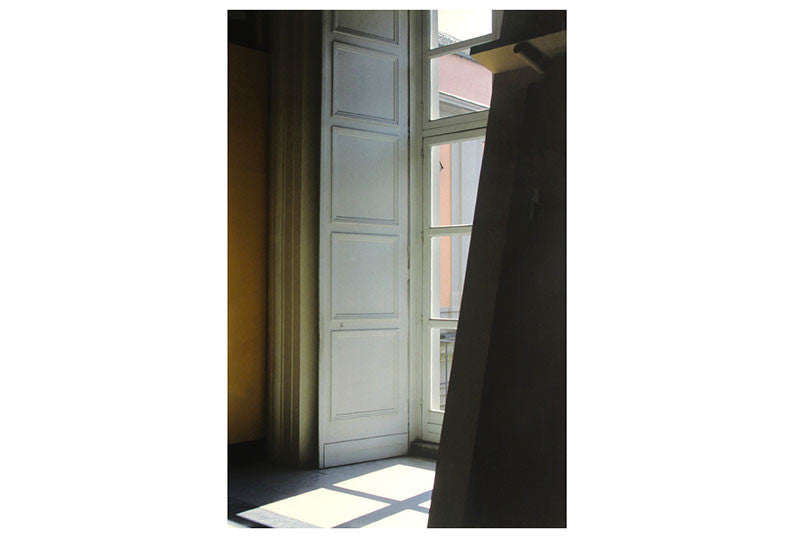
In May 2016, on the occasion of the Artphilein Foundation monthly exhibition, Choisi presents Thomas Florschuetz’s photography, Enclosure #1.
With the cycle entitled Enclosures, Thomas Florschuetz articulates his interest in architecture and the possibility of re-reading it through new perspectives. He aims to explore the permeability of inner and outward spaces, as well as the confines levied by the visual perception.
In Enclosure #1 he depicts a window of the Museum of Capodimonte in Naples: the superimposition of window frames, wings and walls forms a geometric raster whose depth of field is optically expanded by the interplay of light and shadows. The perspective adopted by the artist creates a complex tension between the different spatial levels and the architectural elements.
This artwork entered the collection of Artphilein Foundation due to the artist’s ability to transform by the means of photography a seemingly trivial topic, such as a window, in an abstract theme of complex interpretation and with strong symbolic and conceptual significations.
Thomas Florschuetz was born in Zwickau / Saxony (former DDR) in 1957, he lives and works in Berlin. In 1981 he moved to East Berlin and in 1988 to West Berlin. In 1987 he won the Award for Young European Photographers in Frankfurt, first in a series of international prizes and awards. He regularly exhibits in major museums in Germany and worldwide.

In April 2016, Choisi presents and displays the N. 110/111 (2005-2006) of the artist’s magazine “Plages“, dedicated to “Robes d’artistes”, from the Artphilein Foundation collection.
Each of the 600 copies of this magazine is unique and includes 25 ‘dresses’, all original artworks of the artists involved.
The artist Roberto Gutierrez (1939-2011) founded “Plages” in 1978 and directed it for 33 years, until the last N. 130 of May 2011; this artist’s magazine involved hundreds of artists over time.
“Plages is quite an overflowing magazine: to be aware of this one has to look at a complete collection, to perceive how it withstands archive boxes attempting to contain it.”
To diffuse “Plages“, in 1978 Roberto Gutierrez showed up with a suitcase in the halls of the Parisian art fair FIAC, without prior notice and authorization: Jean-Pierre Jouet, founder and director of FIAC liked the project, to the point that he attributed a free stand; also other international fairs (ArtBasel, Artefiera and others) for decades granted this particular artist’s magazine a booth, without asking anything, except the announcement of their fair in the editorial booklets of Gutierrez to “Plages”.
“Plages” was realized in a high number of copies (from 500 to over 1000), a real challenge to the inventiveness and the manual skills of the artists involved, who had to realize for each number different and special works. The artists were not paid; the price of single numbers or subscription was kept intentionally low, in order to allow anyone to buy this kind of artwork.
As Roberto Gutierrez writes in his editorial:
“Here we are in the heart of an art project overruling the cleavages of disciplines and trends, so achieving the art of today, an emancipated art, detached from ideologies of power and economic contingencies, only possible if the artists feel in control of their creation.”
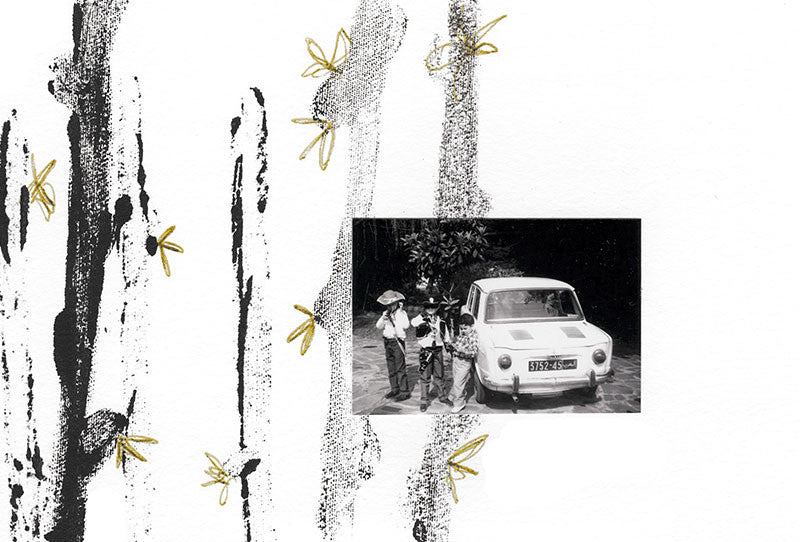
In March 2016, on the occasion of the Artphilein Foundation monthly display, Choisi presents the artist’s book Fragments de vie quotidienne (Fragments of everyday life), entirely written, conceived and produced by Rita Alaoui (born in 1972 in Rabat, Marocco).
With this work, for the first time Rita Alaoui confronts herself with the book as a medium for the artistic expression. The preparation and the researches took two years and finally in 2013 the artist realised Fragments de vie quotidienne, published in 40 copies, each declined on the same text with different interventions by hand (collages, photographs, drawings, embroideries).
Rita Alaoui thus realized 40 variations on the same subject: the everyday life of a woman, who setting off from fictitious childhood memories narrates a hypothetical chronology of life, crisscrossed by desires, fears, casual encounters, ordinary events, randomness, coincidences, thoughts on artificial paradises.
«I try to transform all our fears, our anxieties,
into something that empowers the imaginary
to express them constructively»
(Rita Alaoui)
From the singular to the universal, Rita Alaoui rewrites in a poetic way a possible family album and also asks questions on photography as an expressive medium and its capability to fix the passing of time.
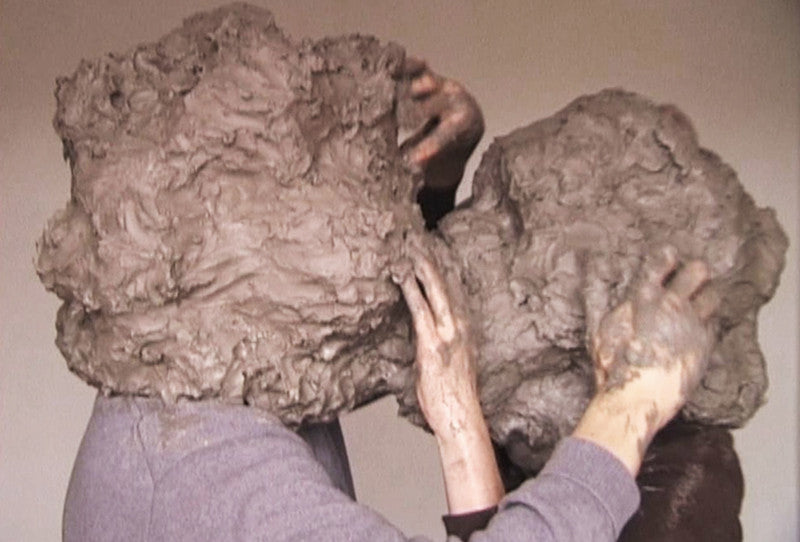
In February 2016, Choisi displays William Cobbing’s video The Kiss (2004) from the collection of Artphilein Foundation.
In The Kiss, the artist proposes one of his recurring themes, heads immersed in a shifting mass of clay, with arms and hands free to move. The concealing of the faces, probably referred to the pixilation that newsroom editors employ to protect speakers’ identities, does not allow to understand the facial expressions of the two actors.
The title The Kiss causes the viewer to catch a glimpse of tenderness in the movements, but their gestures could also have other meanings, such as attempts of prevarication, of submission, of a desire to remain separate and to withdraw. By using clay the artist draws from the imaginary of man’s creation of the Sumerian mythology, of the Golem, of Frankenstein by James Whale. The multiplicity of the possible interpretations of The Kiss, with its potential conflicting meanings, enrols itself in the researches of Artphilein Foundation on the ambiguity of language and gestures.
William Cobbing was born in 1974 in London, where he lives and works. Starting from a specific interest in sculpture, he works with different media, such as video, installation and performance. He studied at Central Saint Martins College of Art & Design and held a PHD in Fine Art by Practice at Middlesex University in London. He attended De Ateliers International Artists’ Institute, Amsterdam. In 2009-10 he was artist in residence at Turquoise Mountain Foundation, Kabul. Among his solo shows: Viafarini DOCVA, Milano (2010); Camden Arts Centre, Londra (2008); TENT, Rotterdam (2005).
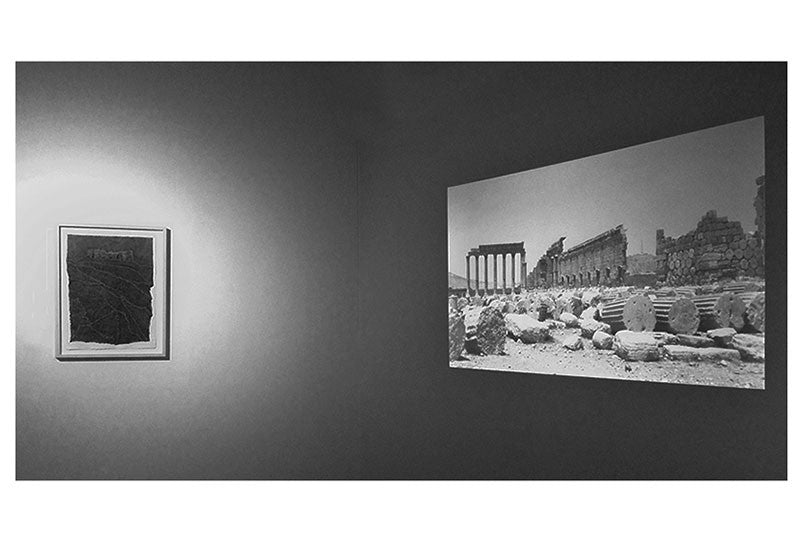
On the last week of January 2016, Choisi proposes a moment of reflection on the memory displaying the artwork by Giulia Napoleone Palmira – Cittadella, from the collection of Artphilein Foundation, shown together with Claudia Wettstein’s photographs of this ancient Syrian city.
Between 2003 and 2009 Giulia Napoleone lived between Italy and Syria, where she taught painting and graphics at the P.U.S.A. University of Aleppo. In Palmira – Cittadella (2005-2007), an ink drawing on paper, the artist sublimates and condenses her suggestions and visions of the fortress of Palmyra and of the Syrian desert, a rarefied landscape once crossed by the caravans traveling on the Silk Road.
The archeological site of Palmyra has been destroyed by bombs in 2015. Claudia Wettstein’s photographs give testimony of its beauty, which now belongs only to the memory. The juxtaposition of these photos and Giulia Napoleone’s work allows a peculiar understanding of the artist’s technique and sensitivity.
Giulia Napoleone was born in Pescara in 1936. In 1957 she attended the Academy of Fine Arts in Rome and she began to experiment etching techniques. Since 1965 she has been frequenting the Sala Studio at the Calcografia Nazionale in Rome. In 1967 she specialized in engraving at the Rijksmuseum in Amsterdam. The paper is her preferred support for ink, watercolor and pastel artworks, and for her etchings and copper engravings. In parallel to her artistic researchs and achievements, Giulia Napoleone carried on an important educational activity. In 1986 and 1999, she participated in two editions of the Quadriennale Nazionale d’Arte in Rome; in 1997 the Istituto Nazionale per la Grafica dedicated to her a retrospective show; in 2001 the Fondo Giulia Napoleone was initiated at the Museum Villa dei Cedri in Bellinzona. Giulia Napoleone exhibits regularly in Italy and abroad.
Claudia Wettstein is a scientific illustrator of archeology. She is a founding member of the Archaeological Association in Ticino and part of the Executive Committee. For many years she participated at the archaeological missions directed by Giorgio and Marilyn Buccellati in Tell Mozan, the site of the ancient city of Urkesh, in the northeast of Syria.

The wall sculpture “Attesa” (“Waiting”, 2001) entered the collection of Artphilein Foundation, as part of its investigation into the memory and the book, in its various declination. Mariapia Fanna Roncoroni works with painting, visual poetry, mail art and sculpture.
The artist finds the appropriate medium to express her plastic anti-sculpture and anti-monumental research. “Attesa”, with Libri Muti (silent books), with no text, is part of the series of Librerie (Libraries), in which the artist wants to convey “thin emotions, fragile balances, volatile moods, enthusiasms and disappointments and all what, with swirling rhythm, happens to the human mind during life, what has hazy and fleeting outlines, is evasive and ungraspable. This is the fluid, allusive and abstract gathering in the Libri Muti, tightened, narrowed, with a few pages open, but always transfixed by a peremptory, defining, overwhelming and clear gesture.”(1)
Mariapia Fanna Roncoroni was born in Milan in 1925, she learned painting at the School of Arturo Colombo and drawing with Mario Vellani Marchi; she attended the Ecole des Beaux Arts in Geneva and studied fresco at the Academia de Bellas Artes in Buenos Aires. In 1978, with Sara Campesan and other colleagues based in Mestre, she founded the cultural center Verifica 8 + 1, which became an international point of reference on structuralism art. In 1995 she was invited to participate in the exhibition at the National Museum of Villa Pisani in Stra (VE) as part of the XLVI Biennale di Venezia. She lives and works in Villorba, near Treviso.
(1) Myriam Zerbi
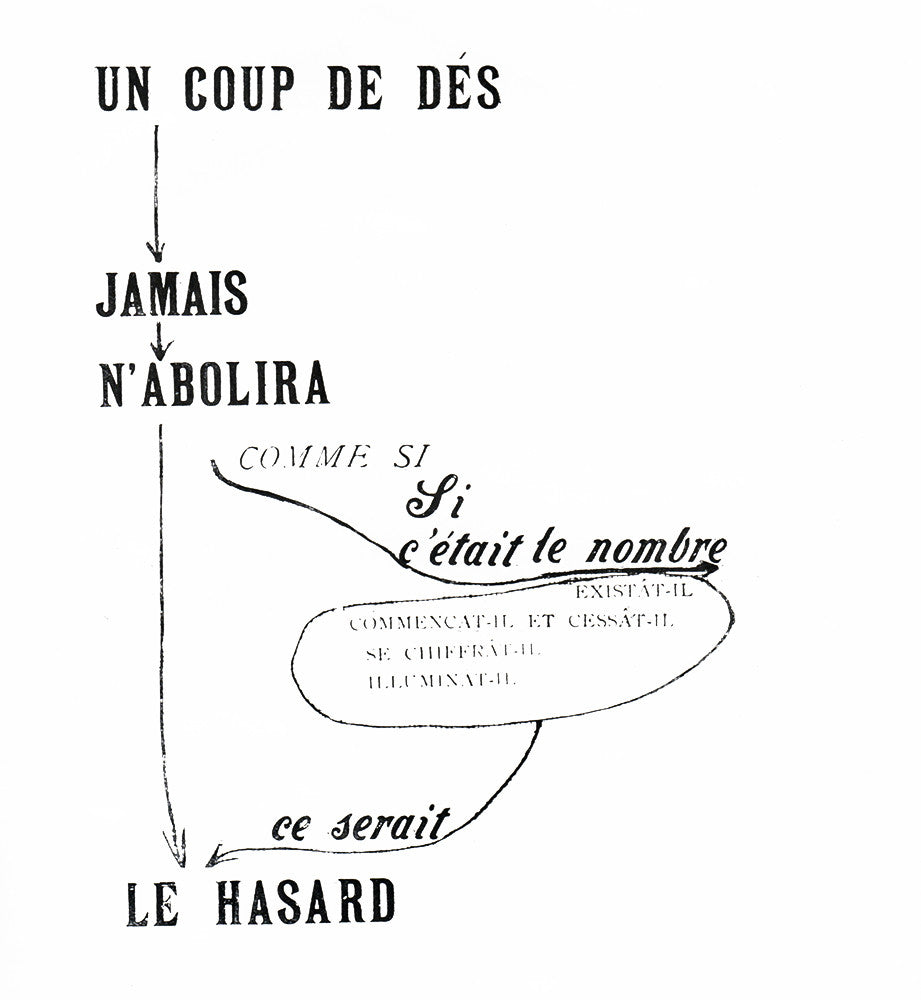
Choisi – one at a time dedicates this introductory exhibition on visual poetry to the books in the collection of Artphilein Foundation, expressly quoting Stéphane Mallarmé and, in particular, his poem Un coup de dés jamais n’abolira le hasard (A throw of the dice will never abolish chance). Visual poetry is an artwork integrating words and visual effects, in which the artist determines and organizes the layout of the words on the page or on the selected media, often by adding images taken from advertisements, tabloids and the mass media.
During his last lifetime, Stéphane Mallarmé wrote detailed and obsessive instructions on the design and printing of Un coup de dés jamais n’abolira le hasard, describing precisely the dimension and style of the typefaces and the page setting. He positioned the words in a disjoint syntax, with secondary sentences, dividing themselves in intervals, so creating the casual rhythm of the throw of the dice. The white spaces of the page, as Mallarmé wanted them, contribute to the visual experience of the reader and they have their own expressive strength equal to the words printed in black. Un coup de dés jamais n’abolira le hazard is preceded by a preface written by Stéphane Mallarmé, in which he describes the concept of subdivisions prismatiques de l’Idée (prismatic subdivision of the Idea) he aims to achieve. His poem presents itself as a cascade of words, distributed over 11 pages, without a defined plot, not even that of a captain throwing the dice trying to survive a sea storm. The text is imbued with symbolic references, transversal reading, allusions, ambivalences, and conducts the reader in a labyrinth of objective and metaphoric elements.
Only in 1914, 18 years after the poet’s death, Gallimard published Un coup de dés jamais n’abolira le hazard –in the ‘Nouvelle Revue Française’– following the layout instructions left by Stéphane Mallarmé. Since then artists, printer and translators, all also obsessed by the poem, tried to interpret and to pay homage to this artwork. On display there are, apart from the facsimile of the publication dated 1914 and of the version with the lithographs by Odilon Redon, the readings and the tributes to Un coup de dés by Jérémie Bennequin, Klaus Detjen, Michalis Pichler and Claude Rouelt.
Together with Calligrammes by Guillaume Apollinaire and the ‘parolibere’ by the futurist Filippo Tommaso Marinetti, Un coup de dés jamais n’abolira le hazard by Stéphane Mallarmé can be considered between the artworks anticipating visual poetry. Starting from the ’50 the neoavant-guardes began to be interested in the exploration of the potentiality of the expressive forms of words accompanied by image, until they achieved to create visual poetry as an independent artistic expression.
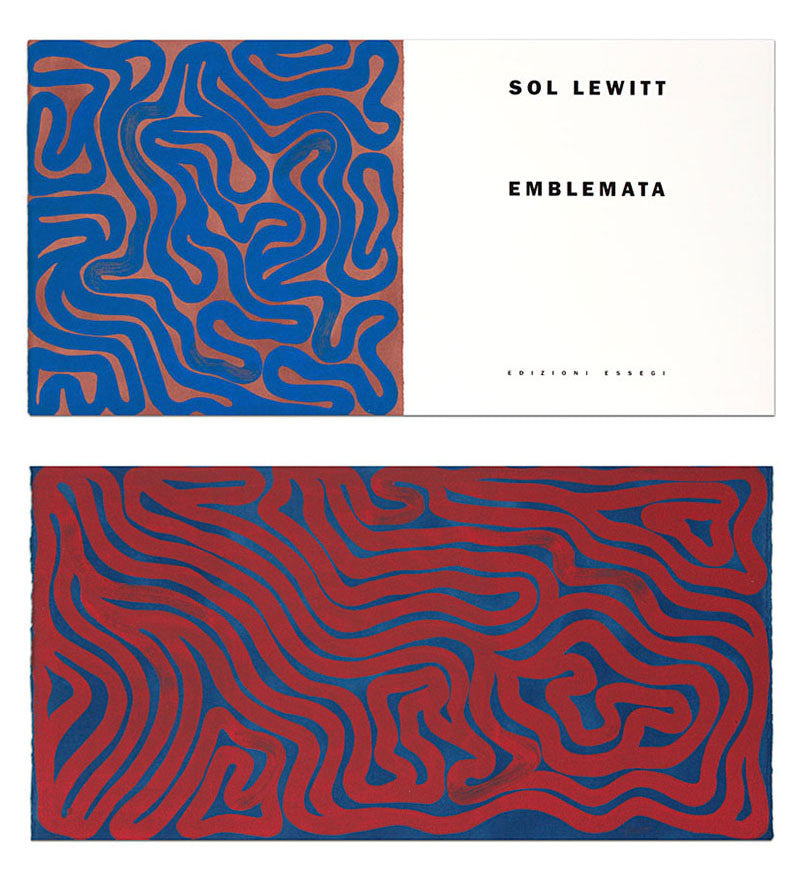
Choisi – one at a time is pleased to announce the December display from the collection of Artphilein Foundation, the artist’s book “Emblemata” by Sol LeWitt.
Sol LeWitt (Hartford, Connecticut 1928 – New York 2008), is among the initiators and principal conceivers of the American minimalism. Together with Dieter Roth, Hans-Peter Feldmann, Ed Ruscha and others, Sol LeWitt was also one of the main supporters of the artist’s book as a self-ruling and independent mean of artistic expression, approachable and affordable to a wide public. With the aim of promoting the propagation and understanding of the artist’s book, Sol LeWitt founded in 1976, with Lucy Lippard, the non-profit association Printed Matter in New York, a still active space where artist’s books, fanzines and all kinds of printed matters can be viewed, exchanged and bought.
Starting from the 60s Sol LeWitt realized more than 80 artist’s books, in which he displayed his ideas of seriality. These artist’s books are an integral part of his artistic investigation, together with other means of expression, such as the wall drawings and three-dimensional structures:
“… the book as the interface of painting, never its copy but always its complex mirror. A different perspective from which to look at the Idea.” (Giorgio Maffei in E. De Donno e G. Maffei, Sol LeWitt Artist’s Books, Corraini Edizioni, Mantova 2010)
“Emblemata” is part of the namesake series, directed and edited by Maurizio Londei on behalf of Edizioni Essegi, Ravenna, in which each artist is asked to realise the transposition of the emblematic essence of his poetry. For this book of 2000, realized in total 90 copies, Sol LeWitt conceived 15 monotypes, without text, where the oil based inks were first rolled on the plate, finished with a brush and then printed on Fabriano paper.
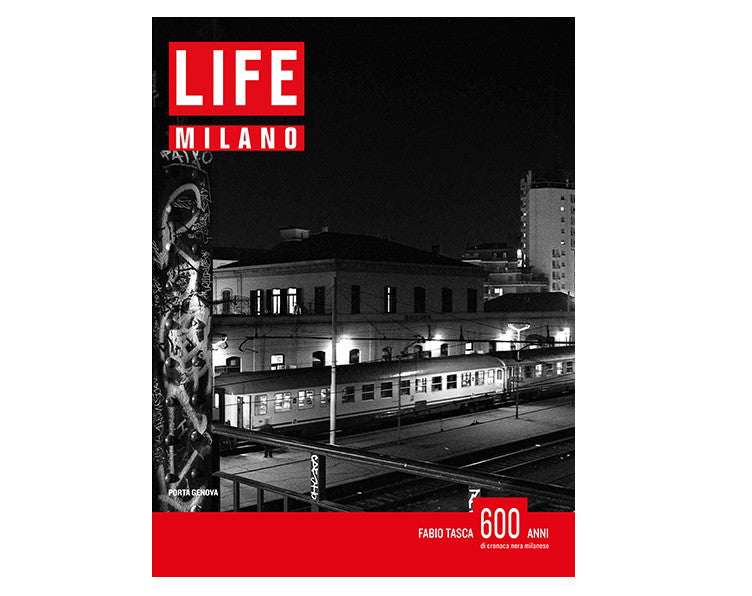
Fabio Tasca‘s installation documents and investigates the creative process of the realization of his book LIFE MILANO. 600 anni di cronaca nera milanese, published by Artphilein Editions in 2015.
The book features a series of black&white night photographs taken in Milan from 2000 to 2013. The intent of the work is to immortalize the places marked by acts of violence, crimes, ‘misdeeds’ or events which the City of Milan prefers not to be proud of or that has merely forgotten. The book borrows its shape and design from the famous magazine “LIFE”.
On the occasion of the exhibition, on Friday October 30th, at 6:00 pm, the photographer Fabio Tasca held a conversation with the journalist Lorenzo Viganò.
At Choisi – one at a time a selection of prints, taken from the book are displayed with the map of the center of Milan and a special soundtrack composed by Simone Barbieri, titled “Milano Esterno Notte”.
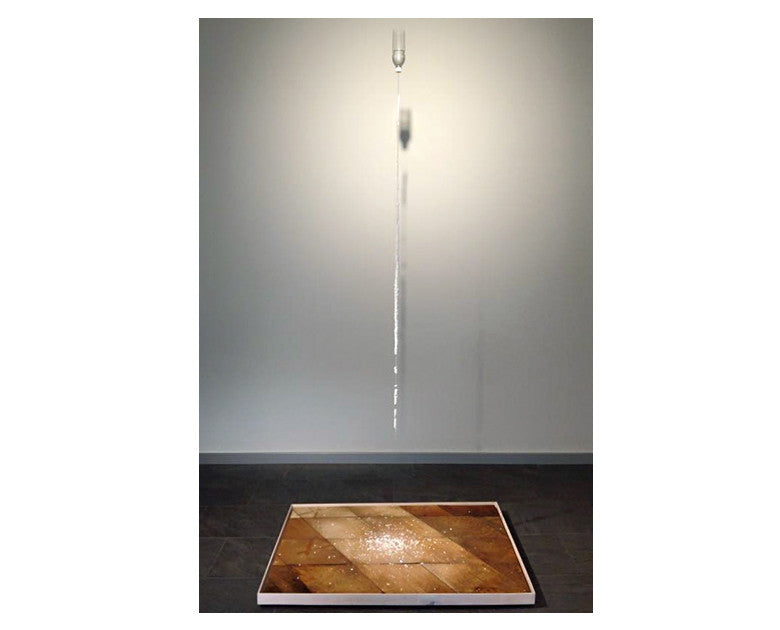
Choisi – one at a time hosts the site-specific installation Salt by Esther Mathis.
Through the installation, the artist put into practice the instructions depicted in her book Salt Manual, published by Artphilein Editions. It is a work-in-progress, available for visits from the beginning of July.
Salt is an installation consisting of PET bottles, wool, water and salt. The actual work is being created in the exhibition space. It is the recording of a process. A kind of salt machine, which consists of a vertical pillar of salt and an underlying ground drawing. The traces of many influences (such as dust or moisture) are clearly recognizable from the salt crystals. The interaction of the salt and the external influences ultimately form the work – a unique.
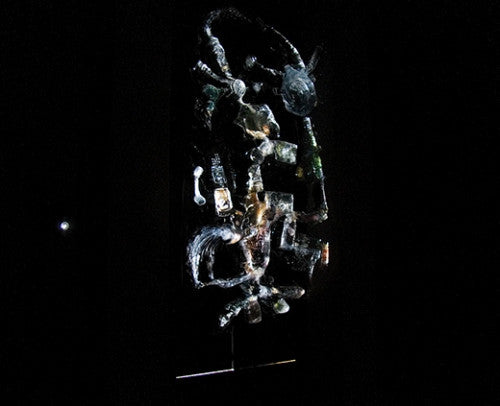
“Processes / Layers”, the monographic publication on the artist Jakub Nepras, published by Artphilein Editions, investigates and explains the paths and processes, experienced by the artist in his artistic research, through a series of images of the works, views of the studio as well as some sketches and drawings. The publication includes the critical contribution by Jiří Ptáček, the interview with the artist by Nicola Trezzi and the short essay by Gabor Laczko on the meaning of ‘process’ and the relationship between artist, artwork and viewer.
At the occasion of the launch of the book “Processes / Layers”, Choisi – one at a time inaugurates the new display from the collection of Artphilein Foundation with the videosculpture Processes (2009) by Jakub Nepras, which gave the input to Artphilein Editions to publish a monograph about the artist.
“The work contemplates the frailty of values that change in the course of life. Animation series run in different ways anti-clockwise. (…) At the end all of it gets lost in a dark whirl, where it’s hard to see what happens next. This is an allusion to the crisis we are going through”. (Jakub Nepras)